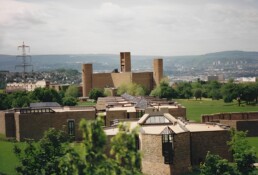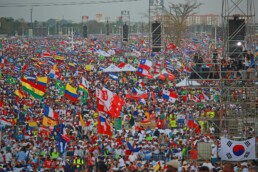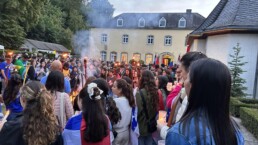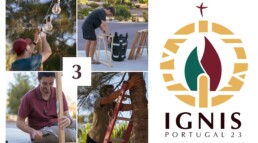The Father Kentenich Secretariat and how it's spread throughout the world
Shortly after Father Joseph Kentenich's death - September 15, 1968 - an idea spontaneously arose: "I am going to pray for his intercession". Quite a few people thought the same thing. Many began to entrust their intentions to him and became "spiritual friends" of Schoenstatt's founder. This, together with his reputation for holiness, led to the opening of the beatification process and the creation of the Father Joseph Kentenich International Secretariat.
The Central Secretariat and its branches
Who would have thought that, years later, Father Kentenich's circle of friends would reach 94 countries and 30 languages? Today, the International Secretariat, which has its headquarters in Germany, has 17 branches abroad. The national secretariats are present in Argentina (Florencio Varela), Australia (Mulgoa), Brazil (Atibaia and Santa Maria), Chile (Santiago), Costa Rica, Dominican Republic (La Victoria), Ecuador, Mexico, Paraguay, Poland, Puerto Rico, Portugal, Switzerland, Spain, South Africa, and the United States (Milwaukee -Waukesha-).
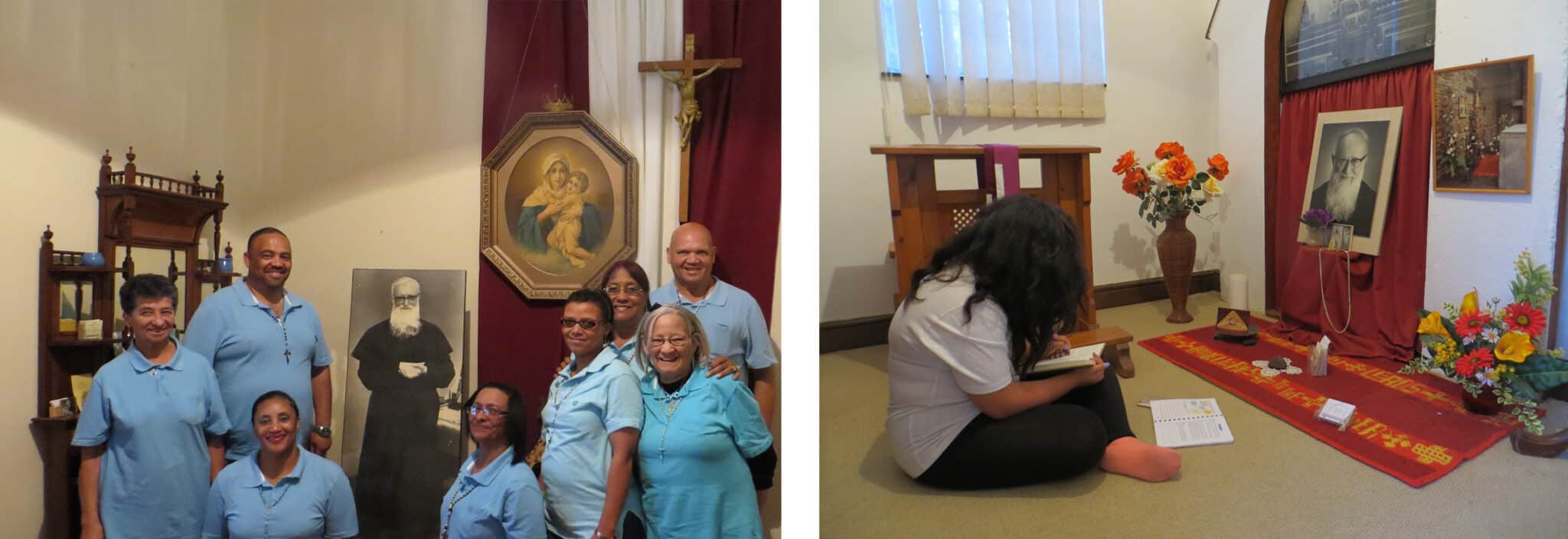
The headquarters of the International Secretariat is located on Mount Schoenstatt, at the Father Kentenich House. Sister Gisela-Maria Mues is currently responsible for the work and explains: "The secretariats in each country work independently on site, but stay in close contact with the Central Secretariat. This is especially true for the publication of writings: they are published by the Central Secretariat and partially translated here".
Poland: In Father's footsteps
In Poland, the Father Kentenich Secretariat is located in the Movement's National Center, next to the Fidelitatis Shrine, in Otwock-Świder.
Sister M. Krzysztofa Fulneczek, who runs the place, says: "The Secretariat receives testimonies and expressions of gratitude for Father Kentenich's intercession. All correspondence is handled here, and signatures are collected for the beatification process in the Movement's centers throughout Poland. They are catalogued and sent in their totality to the Secretariat in Schoenstatt".
In Poland, various activities are carried out to promote the life and work of Schoenstatt's founder. Novenas, books, pictures, etc. are distributed. In the last two years, the Secretariat has also published the Polish version of "Impulses for Life", which is "very popular", says Sister M. Krzysztofa.
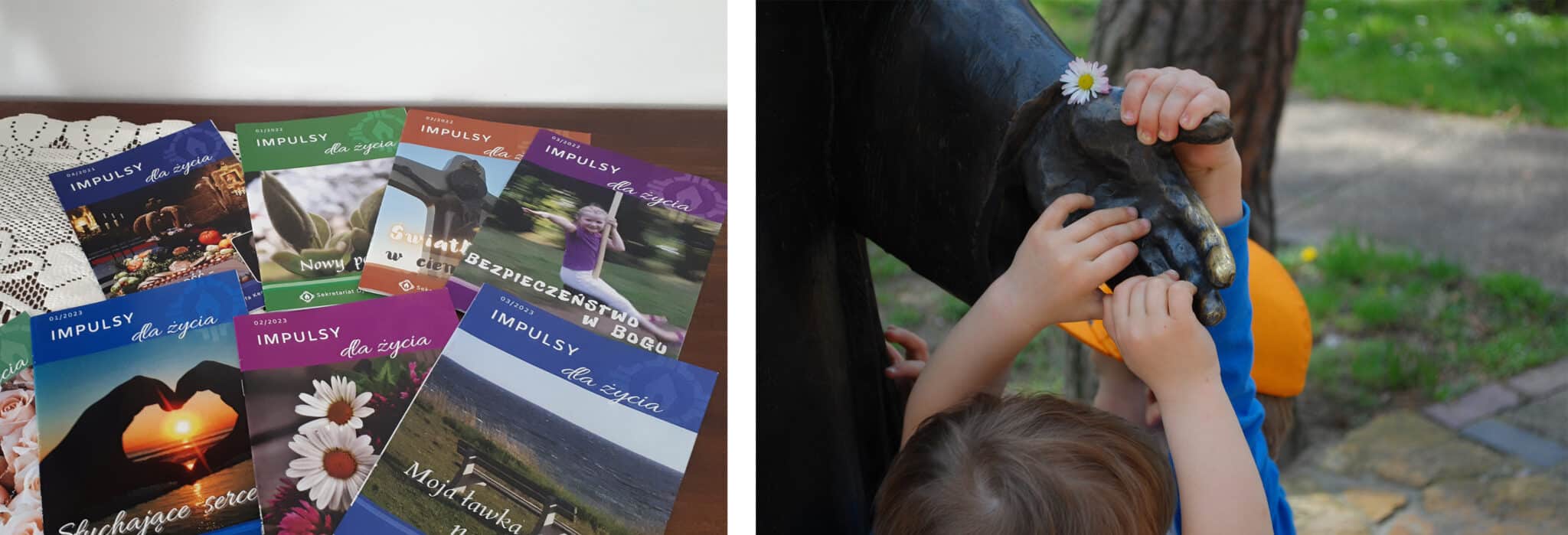
The statue of Father in Otwock-Świder is the primary place of encounter with the Founder. In addition, "since 2013 we have the project 'Father Kentenich's Way in Poland', which aims to make known and remember 17 places where Father Joseph Kentenich stayed between 1922 and 1937 and held retreats, formation and pastoral courses, among other things," explains Sister M. Krzysztofa.
South Africa: 75 years since the first visit
"Here in South Africa, we have a small but faithful movement that maintains a deep relationship with our founder," says Sister M. Connie O'Brien.
2023 will mark 75 years since Father Kentenich's first visit to the country. "In our Father Documentation Hall at the Provincial House, we have recorded an overview of our founder's life and his visit to South Africa through various photographs with captions. We have also installed the original altar on which he celebrated Holy Mass in Paarl, as well as the door of a room in which he stayed in Worcester. Schoenstatt members, as well as the general public, have free access to this room and some use it as a meditation room to reflect on Father Kentenich's life. The growth of the Movement here in Cape Town and Johannesburg has also been visually represented in this room," explains Sister M. Connie.
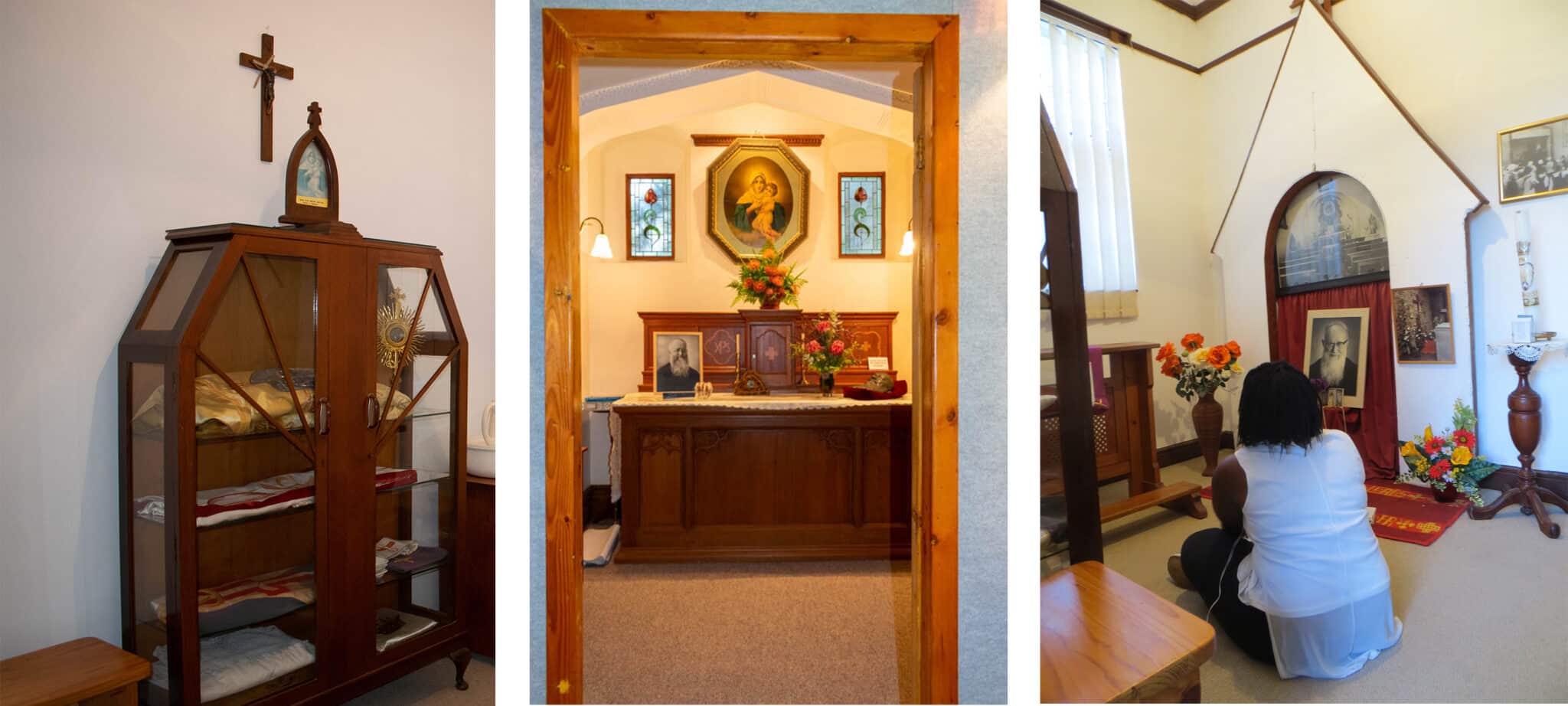
Every year on September 15, the Archbishop of Cape Town, Stephen Brislin, meets with the Schoenstatt Movement in the region. He celebrates Holy Mass and proceeds to Father Kentenich's statue, after which he presides at the renewal of the Covenant of Love. This year the celebration will be even more special, since Archbishop Stephen Brislin has been appointed cardinal by Pope Francis and will participate in the consistory in a few days, at the end of the month.
Australia: Shoes off
In Australia there are several editions of "Impulses for Life", which come from the International Secretariat. They also have a good collaboration with the Milwaukee Secretariat in the USA, since they share the same language.
"We have a 'Father's room' that is accessible to the public who visit us regularly," says Sister M. Angrit Bergmann. "The visitors usually don't know much about our Father, but they love to pick up a phrase of his, and the sisters try to explain it to them when they are around. Many of the visitors are from India or Sri Lanka and treat the space as a 'sacred place,' taking off their shoes before entering."
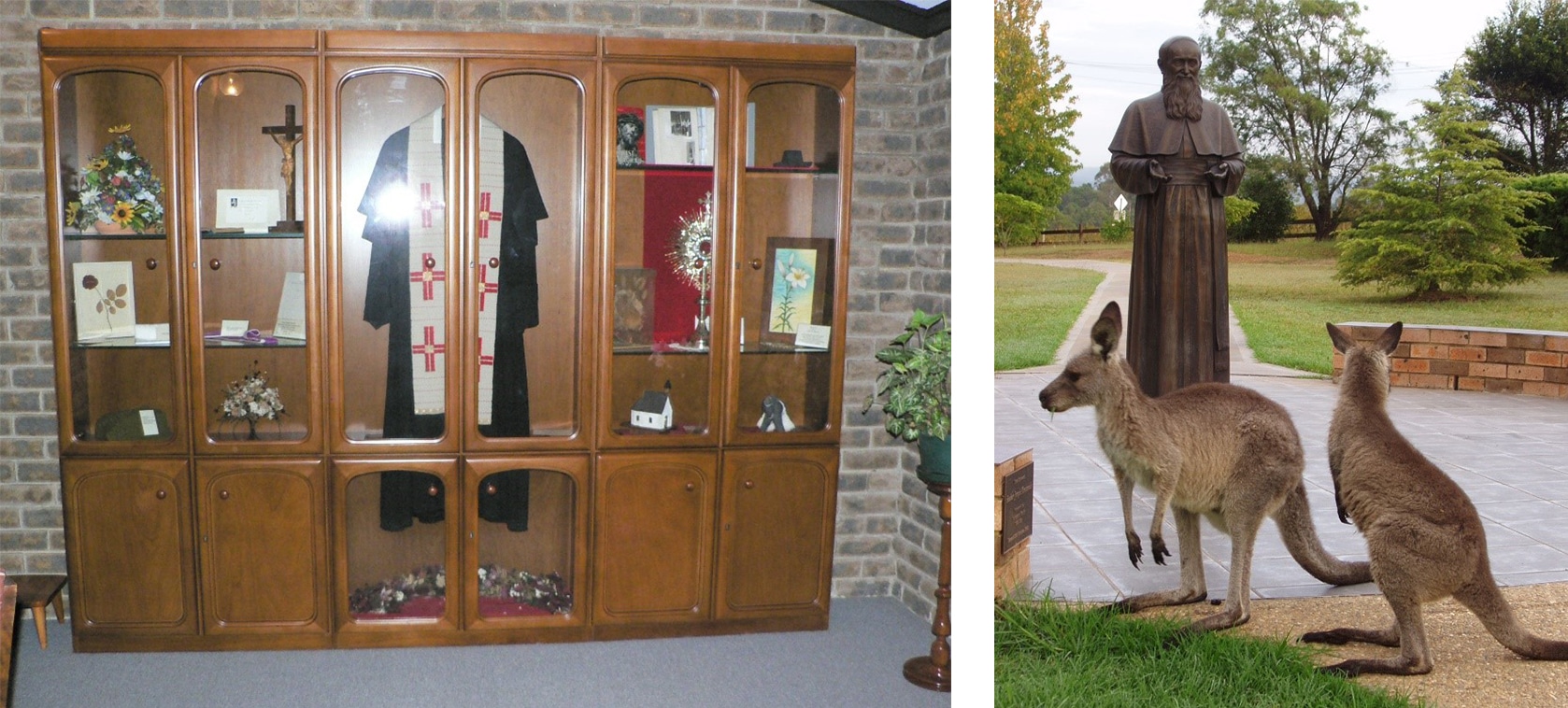
Regional characteristics are strong in the country: "Visitors to the Shrine and Father Room love to 'greet' our Father and often put flowers and sometimes even money in his hands."
Portugal: Adoration Church replica
In Portugal there is an active secretariat and the current head is Sister Maria do Rosário Santos. "Here in Portugal, we try to use all the means and resources at our disposal to make Father Kentenich more widely known. And the first means we use is the spoken word and personal contact, because normally it is through dialogue that the person feels impelled to know more about the life, work and mission of Father Kentenich," she said.
One of the most impressive places in Portugal is the "Father Kentenich Room", modeled after the place where the founder is buried. One can feel very close to the Schoenstatt Adoration Church. "The wall of this room is lined with a picture of the Founder's Chapel in the Church of the Holy Trinity, which makes it a small replica of this blessed place and so, from the first moment you enter this room, it takes you to Schoenstatt. It immediately awakens a holy atmosphere and, at the same time, makes it easy to do a real catechesis on the life and work of Father Kentenich from there."
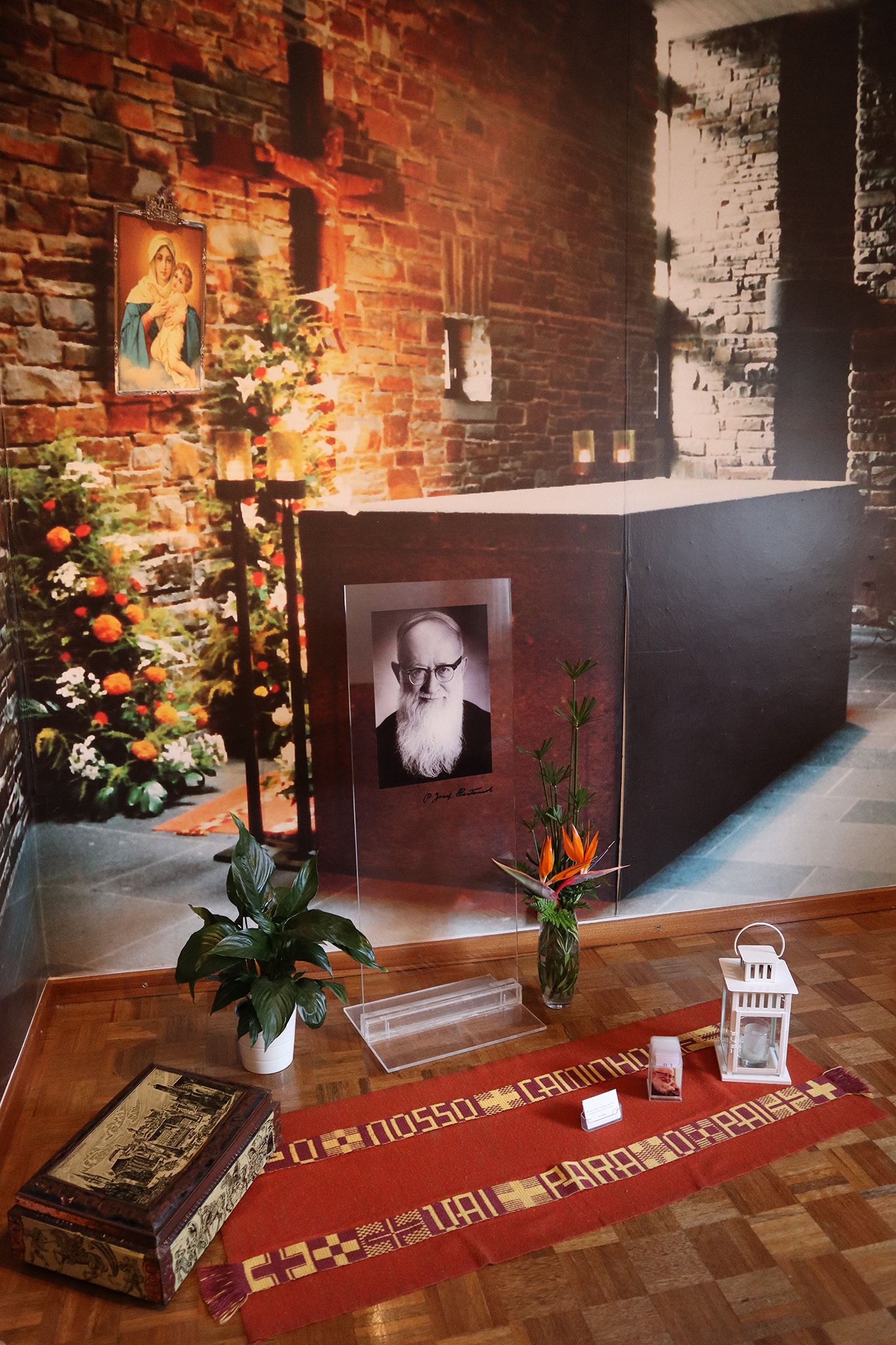
In addition to that, "in a small closet we can also find several of his relics. On each visit, we can take home a thought written by Father Kentenich", says Sister Maria do Rosário.
More information about the secretariats
We invite you to visit the secretariat closest to your region, or to visit the International Secretariat online, with a version in eight languages, at: pater-kentenich.org
Coordinators' Encounter in preparation for the Pilgrim MTA Jubilee
Organizing a national meeting in a country of continental dimensions is no easy task. In the case of Brazil, which covers more than eight million square kilometers, the challenges require months of planning. But it's all worth it when you have a great goal in mind. This is why Neusa Castro Silva, from Anápolis, in the state of Goiás, traveled more than 12 hours along several highways, to be at the Atibaia Shrine, in São Paulo. "I came with great expectations, but what we experienced here was much greater than what we expected", said Castro.
Just like Mrs. Neusa, about 400 people from 20 states gathered for the national meeting of coordinators of the Schoenstatt Pilgrim Mother Apostolate. From North to South, they all carry on the mission of the servant of God, Deacon João Luiz Pozzobon, taking the image of the Blessed Mother to families.
The meeting took place from September 7th to the 10th, 2023 under the motto: "With the Pilgrim MTA, missionaries of hope". Coordinators from 92 dioceses were present, as well as advisors and diocesan priests. It was the second national meeting organized by the Apostolate, and the largest so far.
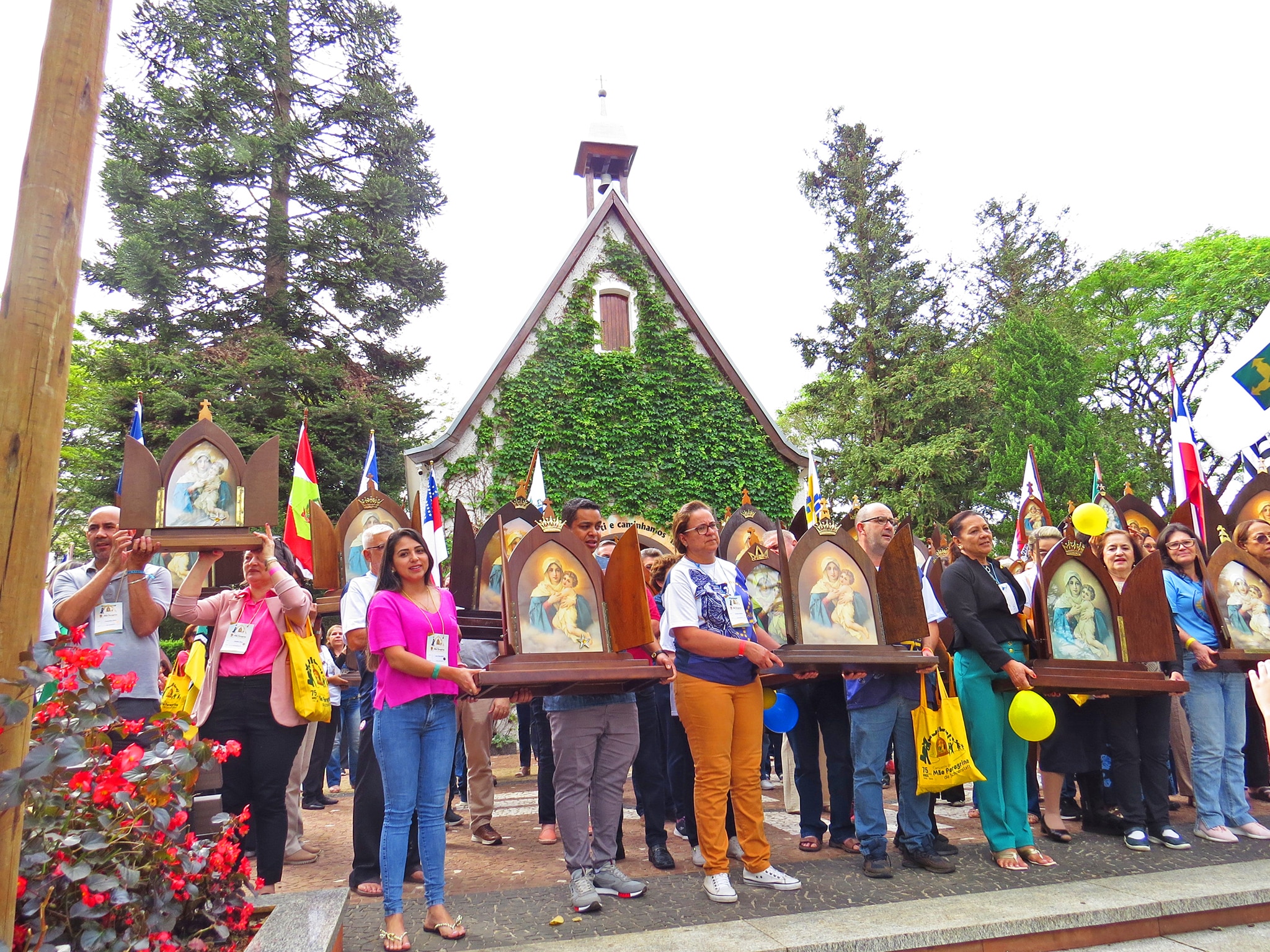
Why hold a national meeting?
The main objective of the event was to prepare for the Apostolate's Jubilee in 2025. For this purpose, a synodal path was planned and thousands of missionaries were consulted. The National Director of the Movement, Father Antonio Bracht, emphasized this at the opening of the meeting: "We want to listen to each other, we want to talk, to engage in dialogue. Those who go to the synod go further. And we want to go further, all together. Together in our diversity. All of this sets us on our way. What unites us all is an enormous love for the Mother and Queen", said Father Bracht.
In Brazil, the Apostolate is divided into two central secretariats that work in collaboration but autonomously. Sister M. Márcia Silva, coordinator of the Atibaia secretariat, said "it is a great joy to welcome the Brazil-Tabor, which is so broadly represented." She added that she hoped that the meeting would be a "time of grace, renewal and new zeal".
Sister M. Rosequiel Lopes Favero, coordinator of the secretariat of Santa Maria in Rio Grande do Sul, mentioned the difficulties many had in getting to the meeting due to a typhoon that devastated cities in the southern region of Brazil. She expressed that "together we have to look at the present time and see how João Pozzobon would have the Pilgrim Mother Apostolate develop in our time".
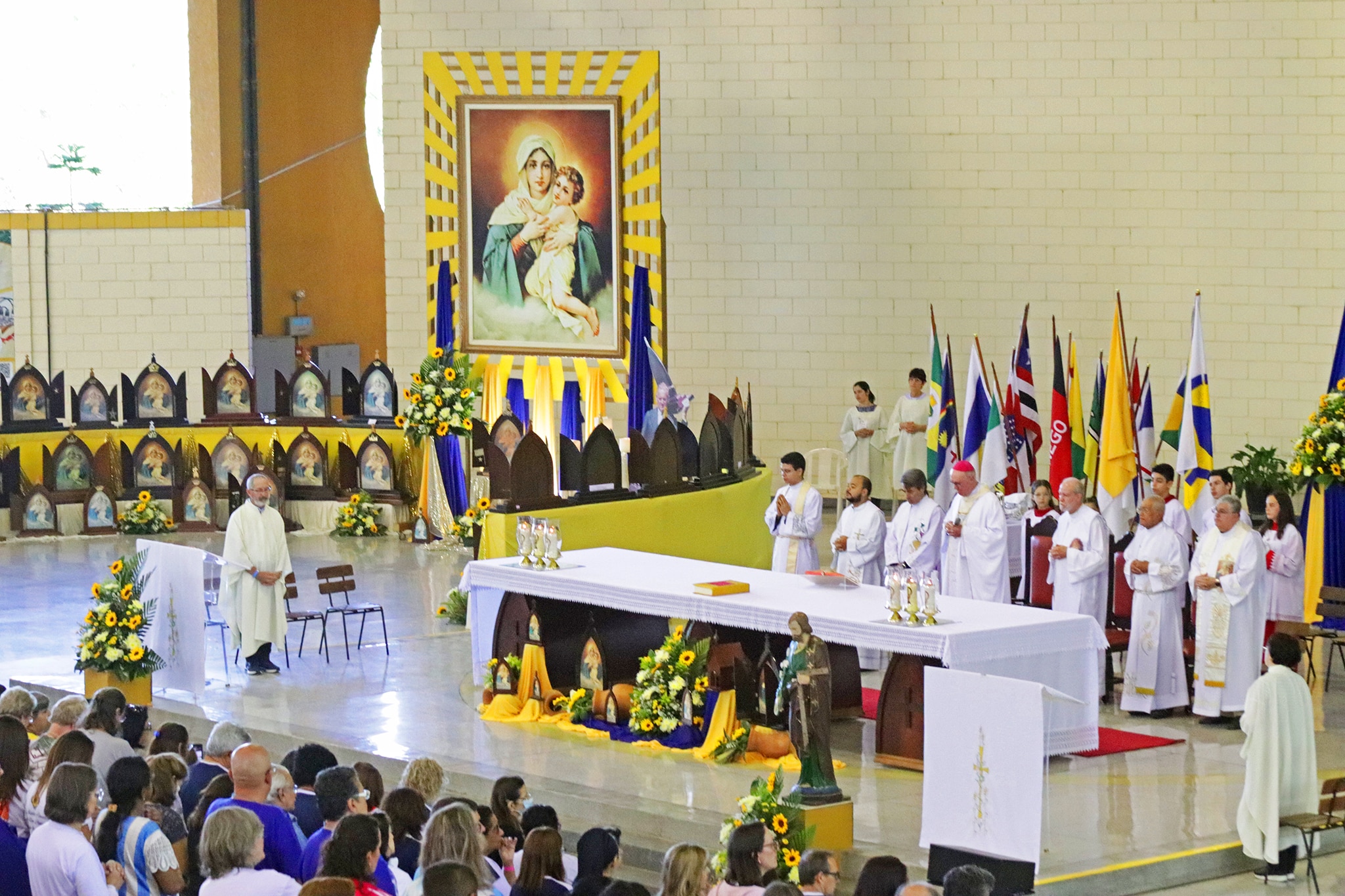
An Exchange of Cultures and Experiences
The second day of the event began with Holy Mass presided by João Inácio Muller, Archbishop of Campinas. Among other things he said that, just like Mary, each one of us has a personal mission. He mentioned that "she [Mary] is a pilgrim and is always thinking about her mission. Whoever has Jesus within himself is a missionary. Jesus needs to manifest himself in us".
The morning also included a presentation by Sister M. Claudete Rauen on the topic "Instruments of Renewal". She analyzed the current situation of popular movements and the changing times. She also invited us to find new ways to fulfill our mission and attract young people. Finally, she posed some questions for the groups to work on.
Lucimar Marques, from São Gonçalo, commented during the group discussion that "it was very interesting to work with people from different states; we observed the experiences from different places and brought these examples to our mission," she said.
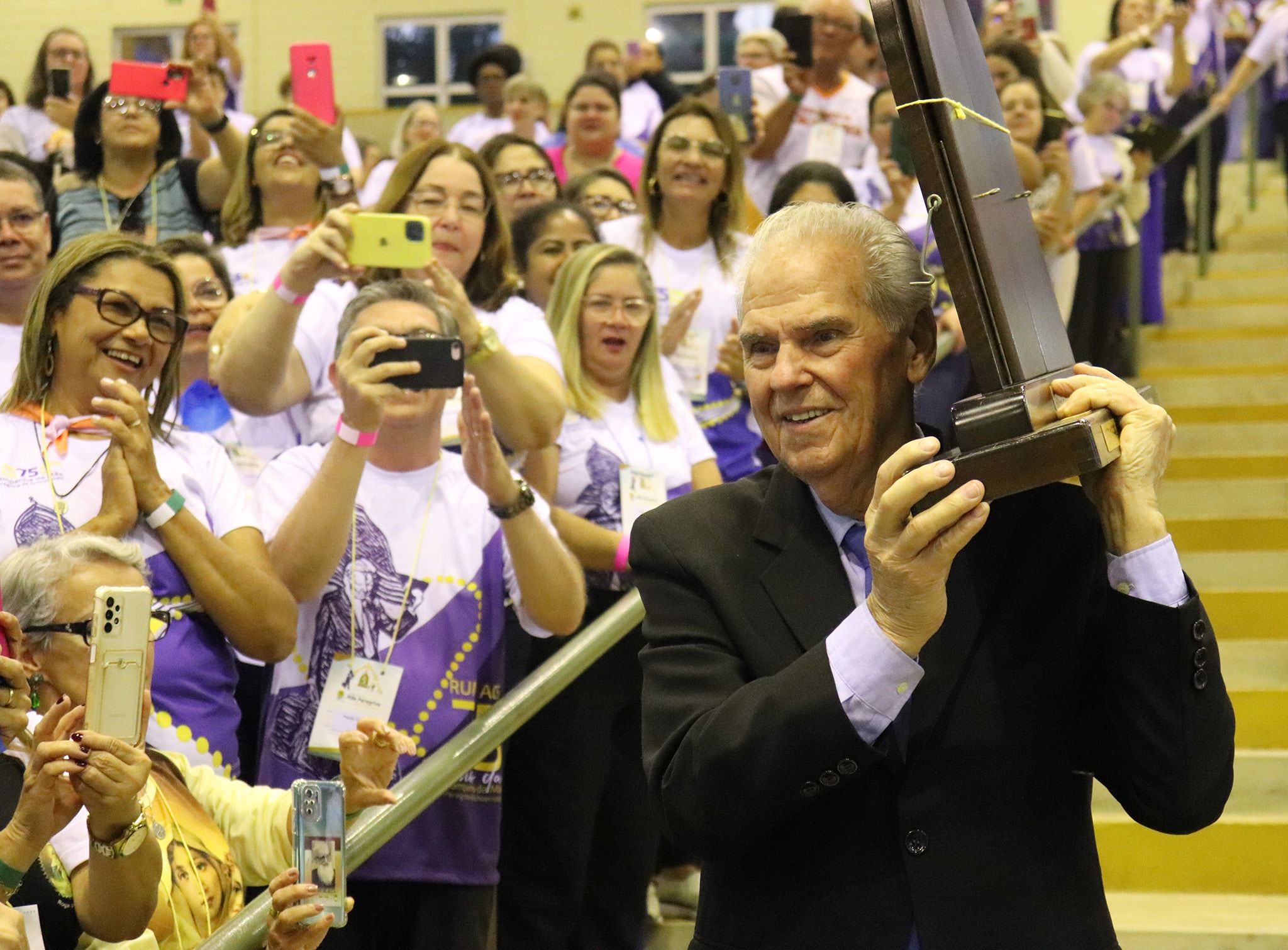
Service, initiative, and missionary spirit
On the 9th, Father Gustavo Hanna Crespo spoke about how João Pozzobon helps us to renew the Apostolate. He highlighted three characteristics of João Pozzobon: service, initiative, and missionary spirit.
As the current postulator of the cause for the beatification of João Luiz Pozzobon, Father Gustavo concluded by presenting the current state of the process. Finally, he invited everyone to pray for this cause and later other work groups were held during the afternoon.
Being sent as missionaries of hope
The last day of the encounter included a pilgrimage to the Shrine with the celebration of the 73rd anniversary of the Pilgrim Mother Apostolate. The climax of the day was the Holy Mass of sending forth presided by Bishop Pedro Luiz Stringhini, Bishop of Mogi das Cruzes.
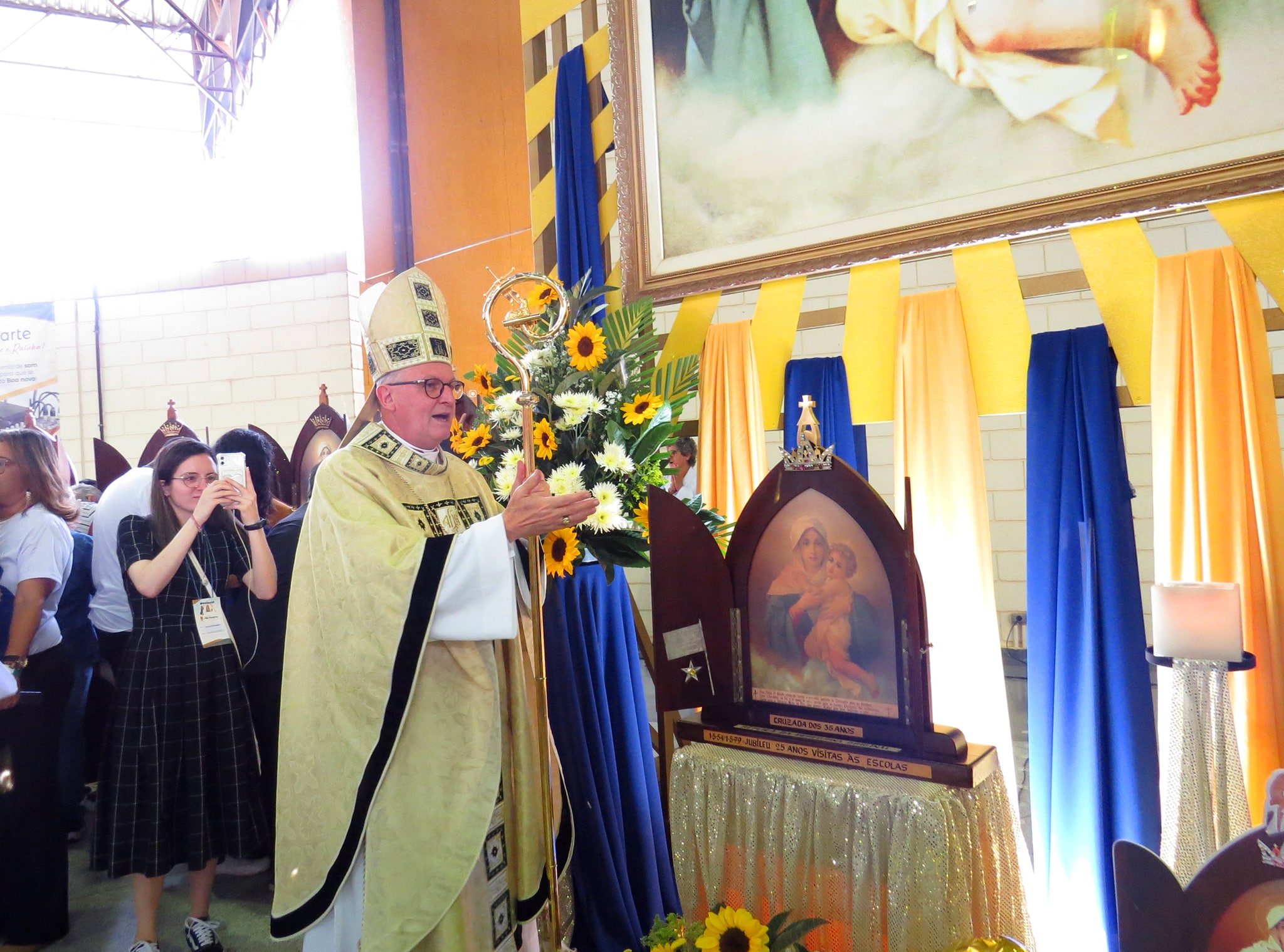
Monsignor Pedro mentioned the importance of the visit of the Pilgrim Mother to families, since "it is a visit by the Church reaching out to them". According to Monsignor Pedro, the Apostolate allows the connection between the imperfect reality and challenges of the world and the perfect reality of heaven. This is what the Pilgrim Mother Apostolate does by reaching out to those who suffer, such as the sick, the incarcerated and many others in need.
At the end of the celebration, the coordinators crowned their Pilgrim MTAs. Meanwhile, Bishop Pedro crowned the replica of the original Pilgrim MTA. In a spirit of celebration, gratitude and enthusiasm, everyone set out to prepare for the Pilgrim Mother Apostolate’s Jubilee.
Various activities have been proposed for the jubilee year of 2025, especially an international meeting, to be held in Santa Maria. More information about this event will be forthcoming soon.
Technology was part of the evening's experience. In the drone image, the coordinators formed a "Living Pilgrim MTA". Watch the video:
https://www.youtube.com/watch?v=8cXskjxGJuQ
Schoenstatt has 2 "International" Shrines - Today is the anniversary of one of them
If Rome is the center of the universal Church, the Schoenstatt Movement certainly had to have its place there, didn't it? However, in addition to its proximity to the Pope, this place has many other peculiarities.
The Matri Ecclesiae Shrine and the Belmonte Center defined a new era for the Schoenstatt Movement since they were a gift from the entire Schoenstatt Family to the founder, Father Joseph Kentenich, at the end of his exile. It is precisely for this reason that this Shrine is considered an international center.
The Schoenstatt Institute of Diocesan Priests oversees the place and the rector of Belmonte, Father Marcelo Cervi, provides some details.
Why are there two international Shrines?
The Schoenstatt Movement has two international Shrines: the Original Shrine in Schoenstatt, Germany, and the Shrine Matri Ecclesiae, which means "Mother of the Church", the latter located in Rome and known as Belmonte.
While the former is related to Schoenstatt's origins in Germany, the latter has to do with Schoenstatt's mission within the Church and the vision of Candelaria, whereby the whole Church is expected to recognize Schoenstatt's importance and charism, including the Holy Father.
The Original Shrine in Schoenstatt, Germany, is the origin of Schoenstatt and the Matri Ecclesiae Shrine in Rome, Italy, is its delta: it is the place where the stream of Schoenstatt graces opens definitively to the world from such an emblematic place as Rome, where the catholicity of the Church is experienced unlike anywhere else.
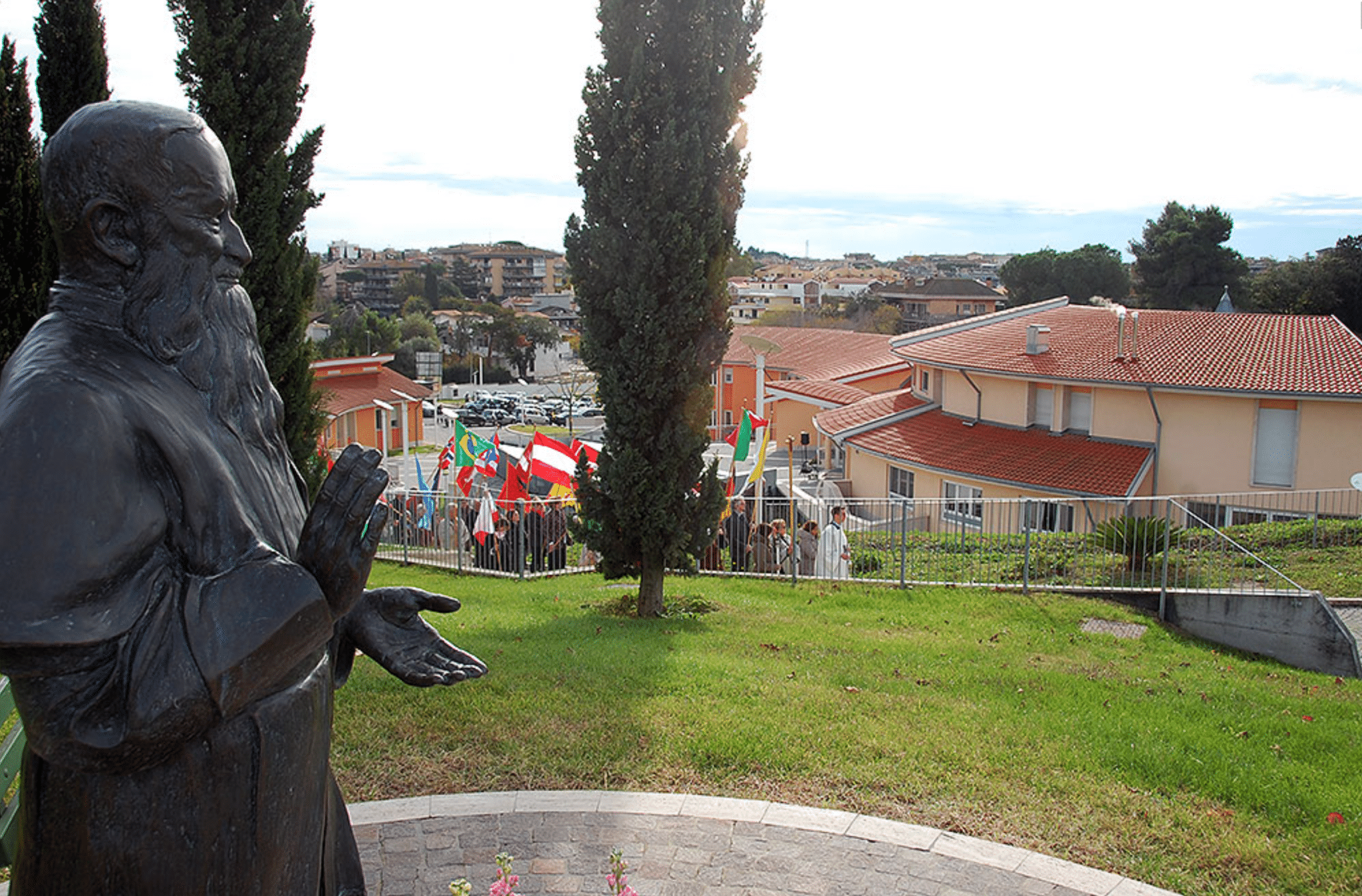
Did Father Joseph Kentenich ask for the construction of this Shrine when he was in Rome at the end of his exile and the Second Vatican Council? What was the intention behind creating this international center?
As a matter of fact, Father Kentenich did not ask for this Shrine, although, like the entire Schoenstatt Family, he harbored the desire to have a Shrine in Rome. For this reason, the Shrine Matri Ecclesiae was given to the father and founder on November 16, 1965, as a gift for his 80th birthday.
It was a gift from the worldwide Schoenstatt Movement, represented by the members of the International Presidium. Our Father gladly accepted this gift and then the members of the Presidium promised him the construction of the Shrine and a retreat house, which would form the international Schoenstatt center in Rome.
Even though the construction had to be postponed due to many setbacks, the General Presidium remained well aware over the years that the promise made to the founder had to be fulfilled.
This came about partially on September 8, 2004, with the inauguration of the Shrine Matri Ecclesiae and then on November 16, 2017, with the inauguration of the Domus Pater Kentenich, the house for retreats and meetings.
The International Schoenstatt Center in Rome wants to be a Schoenstatt benchmark in the Eternal City for all pilgrims and tourists: there, every Schoenstatter can find lodging within a Schoenstatt environment, in addition to being able to learn about Father Kentenich's attachment to Rome through a series of documents and items that describe the Founding Father's visits to the city of Rome.
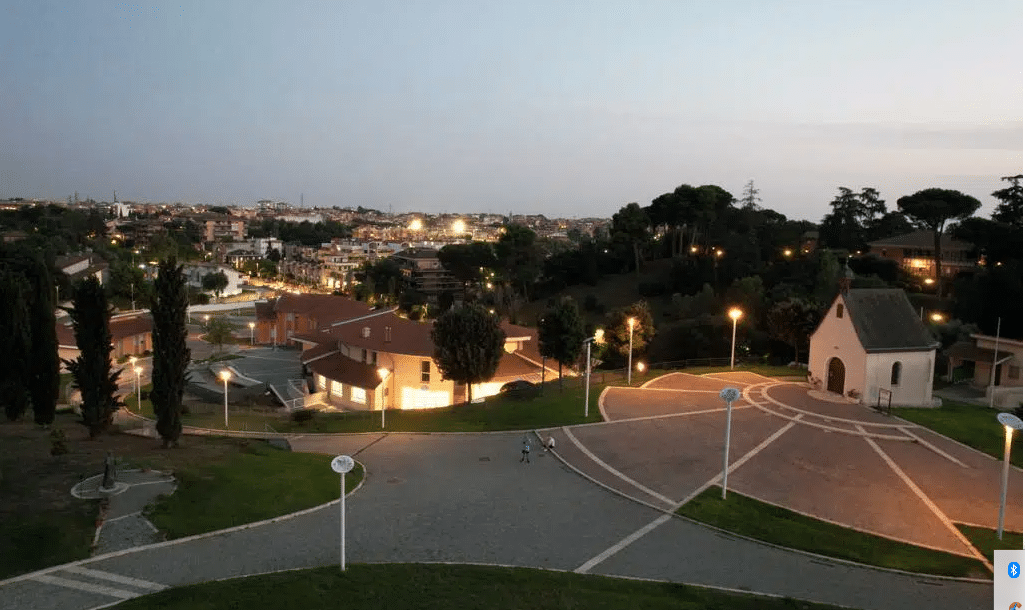
What is the mission of the Matri Ecclesiae Shrine of Rome, in Belmonte, and how does it respond to the challenges facing the Church and the world today?
The significance and importance of the Shrine, which are linked to its mission, are numerous. First, the international Shrine in Rome is important because of its significance as a gift to the Founder, as a monument of gratitude for his release from exile, and as an emblematic place where the Church says yes to the Founder and the Movement.
In this sense Belmonte is the living memory of the fourth historical milestone of the Movement: the acceptance of the Movement by the Church, of the person and charism of the founder and the fulfillment of "all for Schoenstatt; Schoenstatt for the Church and the Church for the Triune God".
Its importance and mission are linked to the fact that Father Kentenich visited the land where the Shrine stands three times: October 26, 1965, November 16 of the same year and February 2, 1966. It is therefore a place where the father and founder was physically present, a place where his presence is remembered and a place where he spoke about the new image of the Church.
The International Shrine of Rome in Belmonte is an answer to many challenges. The first of these is certainly related to the title of the Shrine: Matri Ecclesiae. It is still necessary to go deeper into the implications of Mary's title as Mother of the Church and at the same time into the meaning of the Church as mother of all nations.
Its mission also has to do with Father Kentenich's vision of the Church. In the lectures about the Shrine in Rome, the founder outlined the features of the Church of the new shores, with its own distinct characteristics defined in connection with the ecclesial renewal called for by the Second Vatican Council in Lumen Gentium. A reply to the present crisis of the Church.
In addition, the International Center of Rome wants to provide an opportunity for personalities of the Church in its hierarchy, movements, and organizations, as well as the rest of the world, to come into contact with the movement, with the person of Father Kentenich and to get to know them better. This gives us the opportunity to create the Universal Apostolic Confederation from the coalition of the different Schoenstatt communities, institutes, federations, and leagues, in view of the common mission.
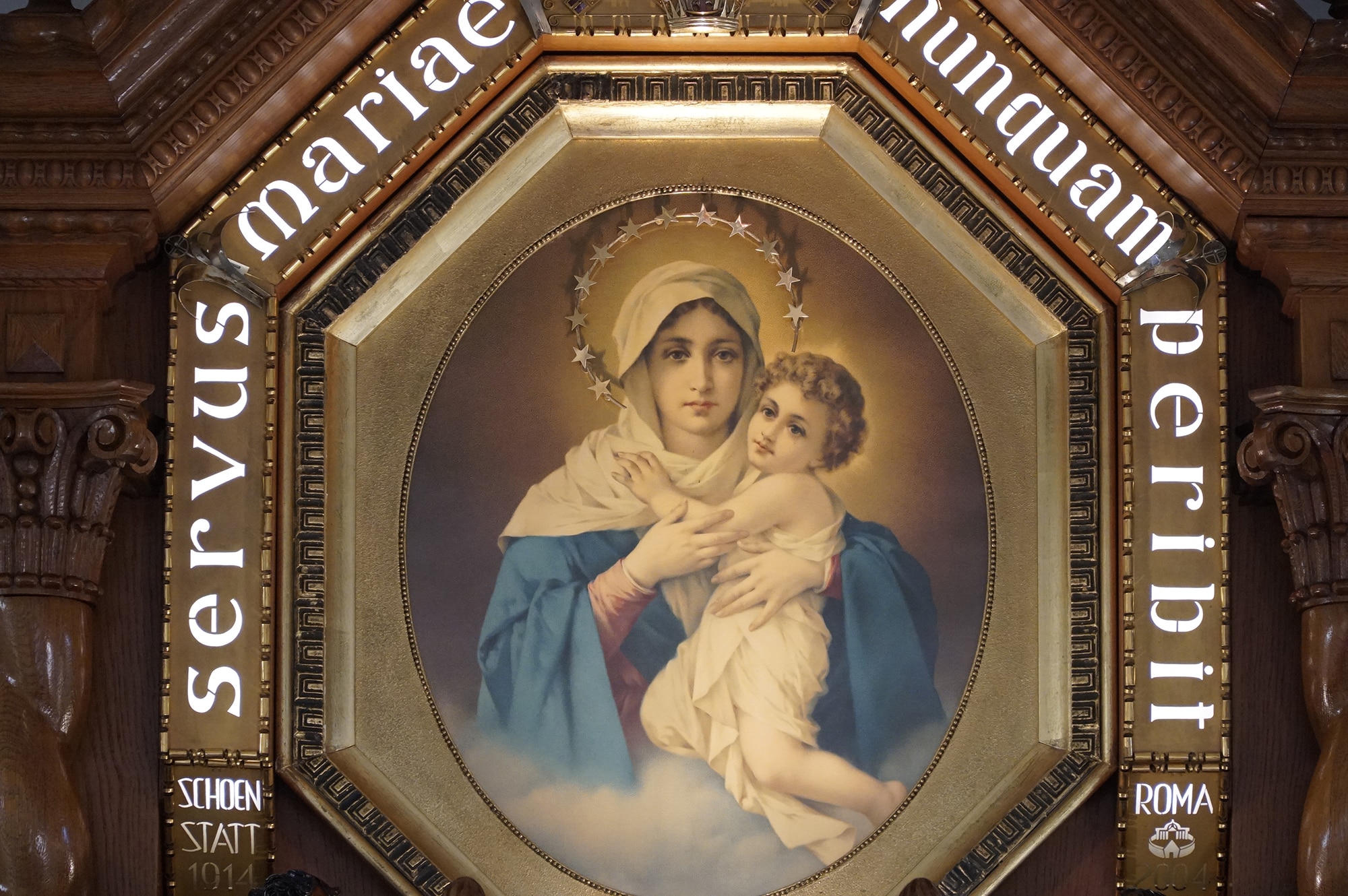
How are the Matri Ecclesiae Shrine and the International Schoenstatt Center in Rome/Belmonte preparing for the Church's Jubilee in 2025?
The preparation currently focuses mainly on two aspects.
On the one hand the preparation for the Jubilee, which attracts millions of pilgrims to Rome, is connected with the international crowning of the Mother and Queen in the Shrine Matri Ecclesiae, through which we pray for Father Kentenich to be released from the new exile to which he was sent after certain accusations in 2020. On the other hand, for the definitive opening of the Domus Pater Kentenich and the completion of the international center. The coronation of which we will be able to speak about later on will take place at the same time as the Jubilee of the Ecclesial Movements during Pentecost on June 8, 2025.
After that, it will be necessary to begin the spiritual preparation of the Shrine's collaborators, which will begin with the international meeting of rectors and operators of Shrines, scheduled for November 11-13, 2023, at the Vatican, promoted by the Dicastery for Evangelization. After that meeting, the Shrine's Council, together with volunteers from all over the world, will have to plan the best way to welcome pilgrims and, at the same time, the staff of the international center will have to become even more aware of its ecclesial and evangelizing mission.
Mary's Assumption, the Story Continues
Imagine Mary's life as the script for a movie. If it were a Hollywood production, the Assumption of Our Lady would probably be the happy ending of the plot.
Thanks to this solemn feast of the Church, many countries have regional, municipal, or national celebrations on August 15th. The definition of this dogma was given by Pope Pius XII's Apostolic Constitution Munificentissimus Deus. Through this constitution, it became a truth of faith that "the Immaculate Mother of God, the ever Virgin Mary, having completed the course of her earthly life, was assumed body and soul into heavenly glory" [1].
The end is a new beginning
The life of Jesus' mother could be the inspiration for a great movie, but we know that the Assumption is not the end of the story. Even though she dwells in heaven, the Virgin Mary is still the protagonist of the script God created for humanity. Mary has already had her happy ending, but the story continues!
"I can easily imagine," says Father Joseph Kentenich, "how Our Lady looks at us from heaven or here in the Shrine. Her eyes are continually searching for us. She wants to know where her sons and daughters are, where they work, if they are in danger [...]. Our Lady's eyes do not rest until she finds them" [2].
She chooses to return: to the Shrine, to her home, to your heart
Knowing the texts that speak about the Blessed Virgin Mary in the Bible, it is easy to notice that in her life there is no ease, no omission. And even though she is already living in heaven, it remains so. Throughout the centuries, Mary has decided to come into the world to meet her children and to be close to each one of them. This is what those who come to the Schoenstatt Shrine experience as they feel the real presence of the MTA. And this is repeated in various Marian Shrines of the Church.
She also chooses to return and dwell among many of the families who invite her to their Home Shrine. And in a special way, she comes to dwell in every heart through the Covenant of Love, thus establishing her home in each one of them.
She decides to return! To be at your side!
With Mary, let us go in haste
Those who followed World Youth Day participated with the Pope and the young people under the motto: "Mary arose and went in haste" (Lk 1:39).
She arose and came to us today. How did we receive her? Did we open our hearts to have her with us? Did we carry her presence to the world? She is in a hurry!
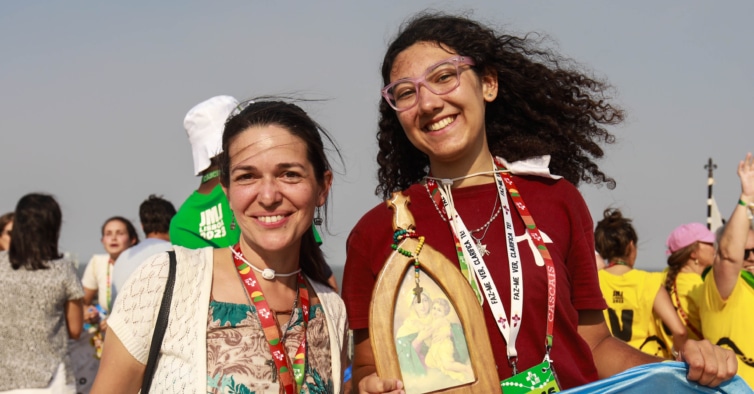
Two Schoenstatt pilgrims made the news in NiT, a Portuguese news media during WYD. Pierina Monte Riso, a Schoenstatt lady, and Paulina Biaciotti, a young Argentinean girl, drew attention for carrying the MTA picture throughout WYD. "We want to walk with Mary in our hands so that people can see her," they said. "She comes with us everywhere, we are her feet," they explained to the NiT portal.
Their testimony illustrates, with a practical gesture, a way to make Mary present everywhere. But it will not always be possible or feasible to have an image of Our Lady in our hands. That is why it is essential to have the image of the MTA engraved in oneself: in gestures, in life, in one's voice.
She is in heaven, but her mission continues on earth. And she relies on each one of us to be her feet, her hands and her voice today. Mary needs you; she is near and by your side. On the day of the Assumption, with the awareness that our Mother dwells in heaven, but is also close to us, we can ask: "In us go through our times, and make them ready for Christ" (Heavenwards, 609).
Note: CNN did a short piece with young girls from the Girls' Youth of San Luis, Argentina, in which they enthusiastically talk about Schoenstatt with great joy. In it, Pierina briefly relates her experiences at WYD:
https://www.facebook.com/watch/?v=989048282333293
[1] vatican.va - Munificentissimus Deus, 44
[2] Às Segundas-feiras ao Anoitecer, Pe. José Kentenich, vol 3, pág 116
Profound Experience of the Girls' Youth in Lisbon
Under the motto “Make us see - Clarifica-te!” 900 girls gathered in Lisbon, Portugal, for the international meeting of the Schoenstatt Girls' Youth, where delegations from various countries were present for three days of activities. The meeting preceded World Youth Day (WYD), preparing the spirit and the heart for the great moments they would experience.
The meeting began on the afternoon of July 28. The young women were received with a warm welcome and the presentation of several videos prepared by the participating countries.
At the opening Mass, all the nations' flags present were raised. After dinner, there was a musical evening with a violin performance by girls from Costa Rica, in which they played several well-known songs, including the anthem of the meeting.
“It was very beautiful to see how our love united us for the Schoenstatt Movement and how we were able to share Masses, adoration, games, songs, and dances,” mentioned Anita Vargas from the Girls' Youth from Argentina, who emphasized that the encounter “was the perfect preparation to begin WYD with a heart full of joy and love.”
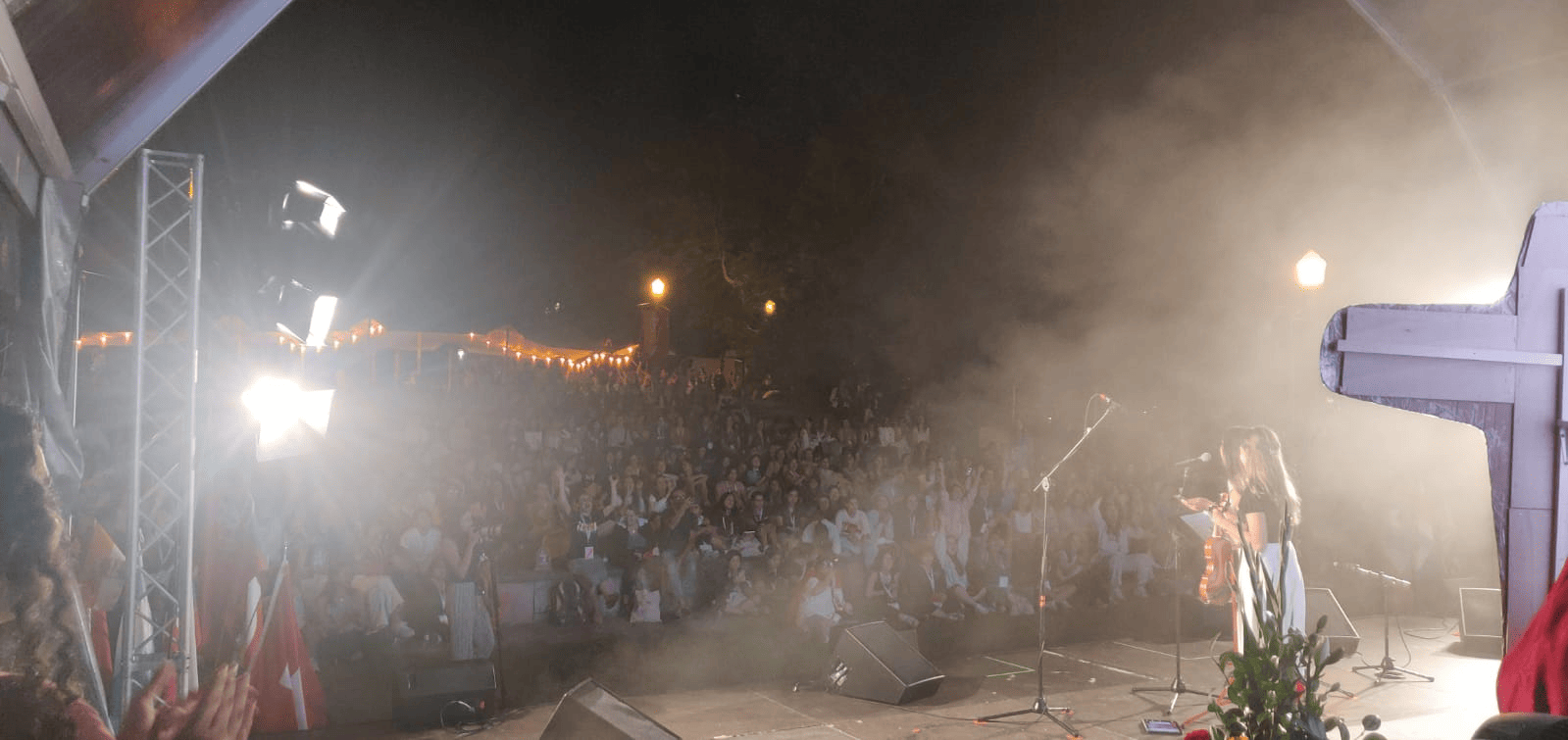
Make us see - Clarifica-te!
The following day, the 29th, was called the “Day of the Shrine”, and everything took place around it. The opening welcome was to the new delegations that arrived and morning prayer.
The leaders of the Girls' Youth of Portugal spent the whole morning reflecting on the theme of the meeting. Francisca Laevski and Teresa Fonseca e Silva, national leaders of this meeting, said that with regard to the motto 'Make us see - Clarifica-te!' “they delved into the feminine identity in the light of the Blessed Mother, whose RTA crown represents the entire road that the Girls' Youth has traveled throughout its meetings.”
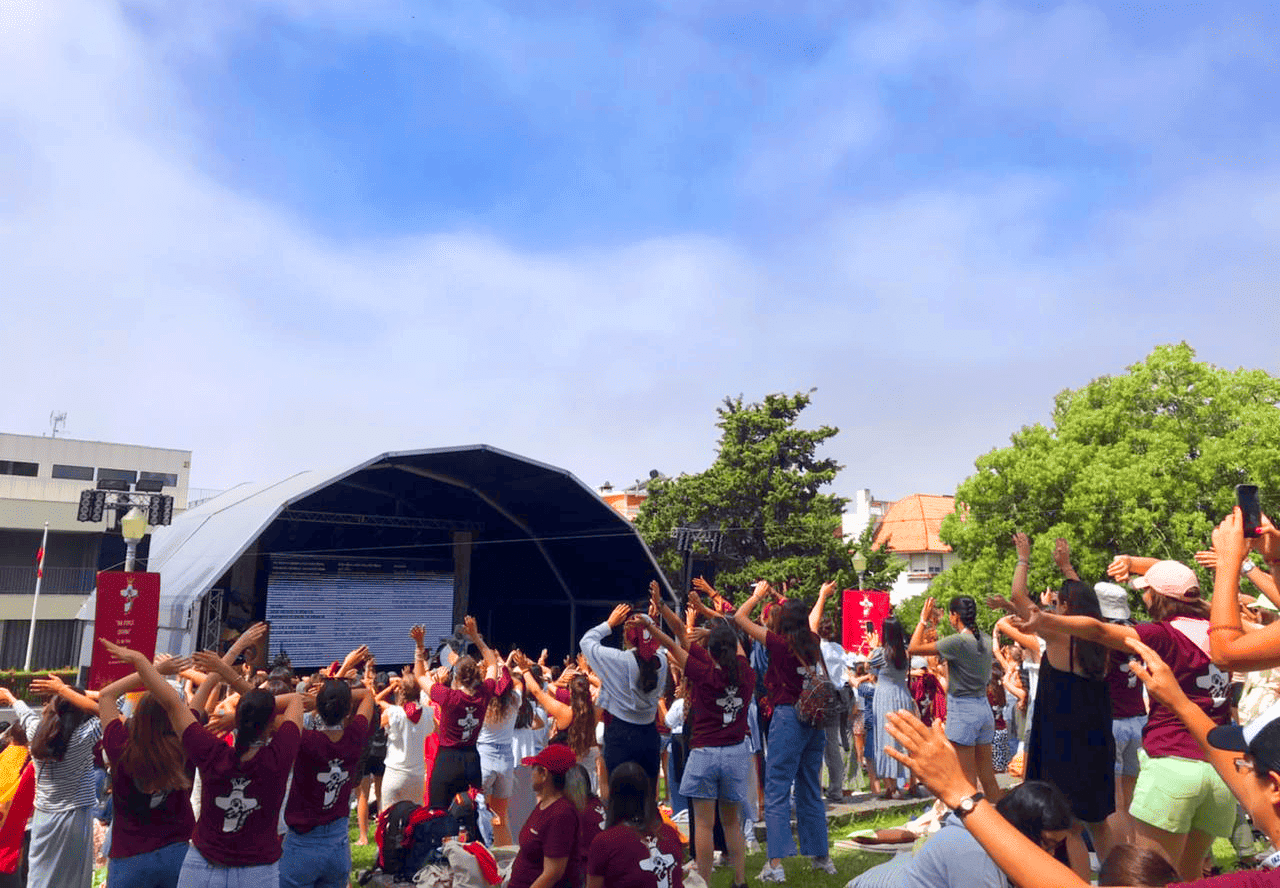
After lunch, starting at noon, the groups from each country took turns to guard the Eucharistic Adoration in the sanctuary until late at night. During the same time, the girls were divided into approximately 20 groups to work together. They shared questions and reflections with each other.
“Participating in the International Meeting was a deeply meaningful experience,” shared Agustina Martin, from Argentina, and from her experience, she mentioned, “During these days, I had the opportunity to connect with young people from different cultures in an enriching environment. The inspiring talks and moments of reflection gave me new perspectives. Without a doubt, this meeting left a deep impression in my heart and will continue to inspire me,” said Agustina.
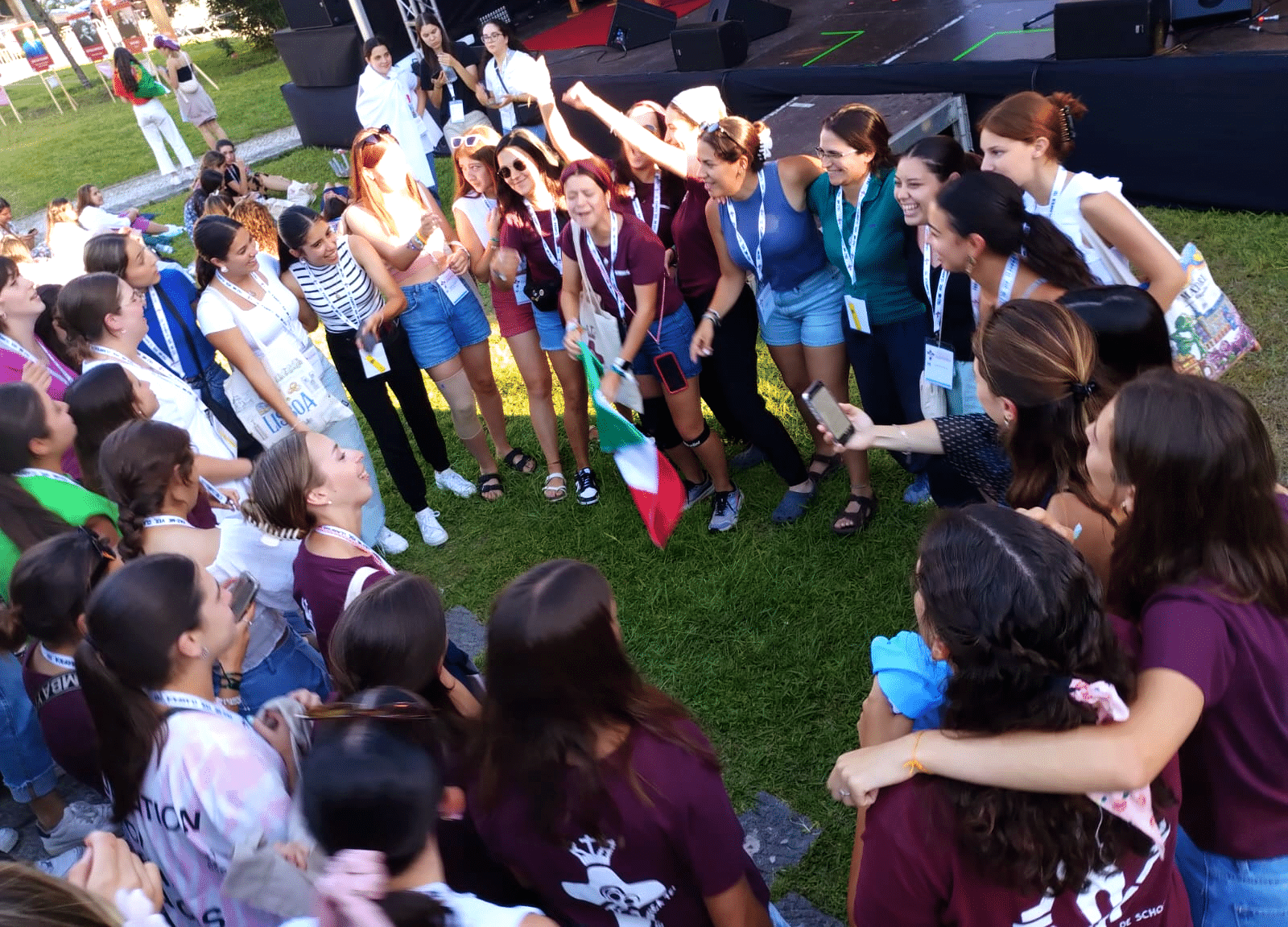
Moments of joy, fun, and prayer
Around 6:00 p.m., the advisors of the Girls' Youth took the stage, and each community present, had the opportunity to present themselves. These communities were: the Institute of Our Lady of Schoenstatt, the Sisters of Mary, and the women of the Institute of Families.
After Mass and supper, the youth gathered for a night of adoration with a procession of the Blessed Sacrament to the square. The silence at that time was striking.
Mariana Caetano, who was the head of the spirituality section of the event, relates: “If I had to describe the encounter with one word, it would be 'harmony.’ Everything was so harmonious!” she mentioned, and she stressed that “once again, the Blessed Mother took care of everything, in a more than perfect way. In this encounter, I met God again, I discovered my originality as his daughter, and with my eyes fixed on Mary, I found my feminine ideal. In her dignity, I found mine, and in her light, I saw all the youth,” concluded Mariana.
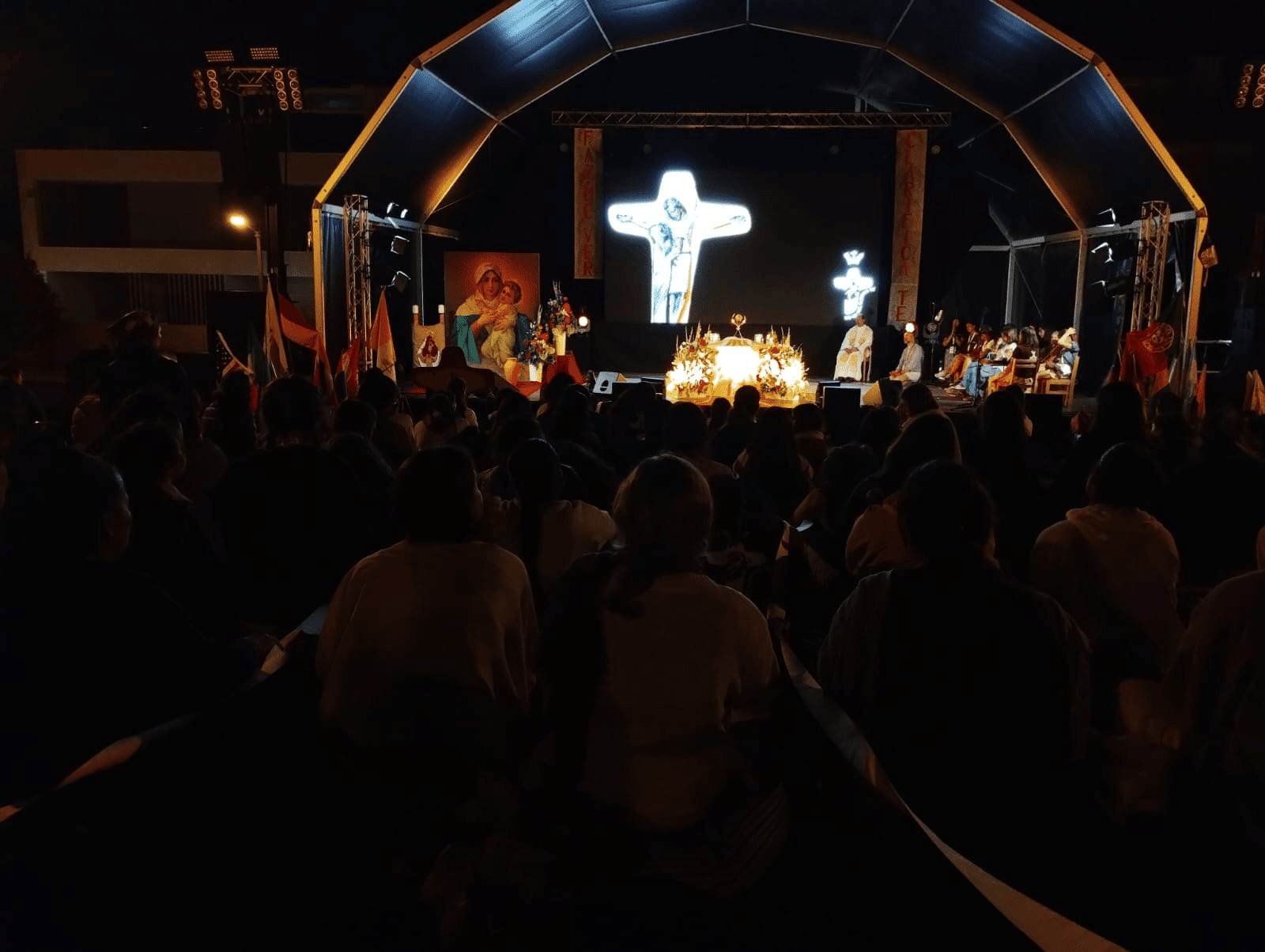
On the way to Fatima: Let us see your graces!
On July 30, the third day of the meeting, the girls went to Fatima, where their activities were free and, together with the Boys' Youth, they gathered for their international meeting in Aveiro, they shared that day and participated together in the Mass and the luminous rosary.
Jessica Prado, from Brazil, says: “his pilgrimage was very special for me because I always dreamed of being in Fatima, especially in the Capelinha das Aparições and in the luminous rosary,” she said. “The feeling you get when you pass through these places is as if the children were still alive; we felt their humility, their look of faith, a very vivid testimony. Each place we visited was very crowded, but it was a place of prayer and meditation. It was very special,” he said.
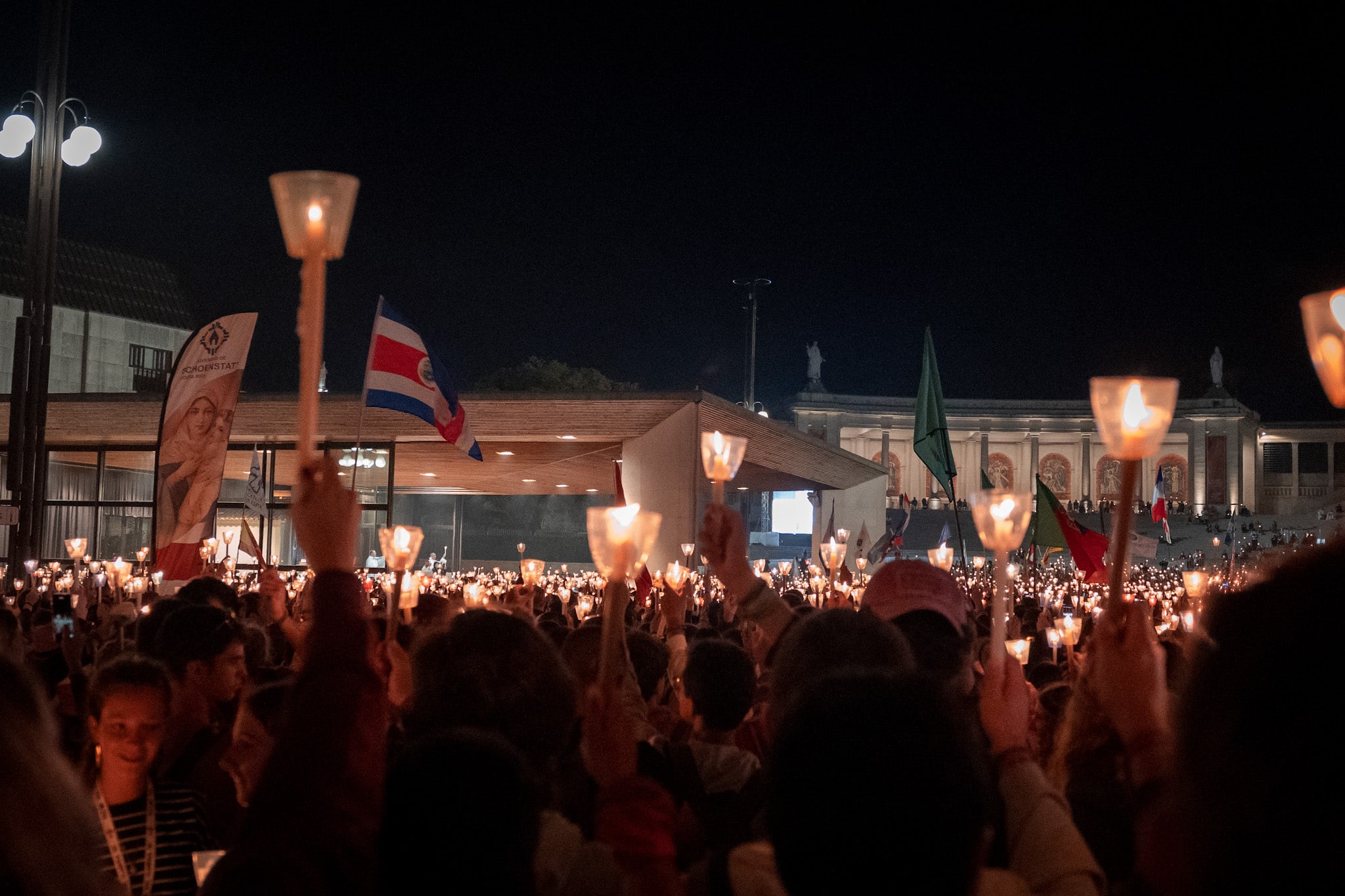
Profound experiences
The meeting was organized by the youth of Portugal and by the Institute of Our Lady of Schoenstatt, which advises the branch. Mrs. Carminho Sarmento narrates: “What we felt the most in our encounter was an atmosphere of great joy, great serenity, despite there being so many people, and also full of shared experiences,” said Mrs. Sarmento. Besides, “the girls shared what they think, how they live Schoenstatt in their countries and in other realities. The balance was very positive, and we received excellent comments from the girls and the advisors during these days that we could share our love for Schoenstatt together”, concluded Mrs. Carminho.
To conclude the meeting, on the 31st, they participated along with the Boys' Youth in the MTA Festival.
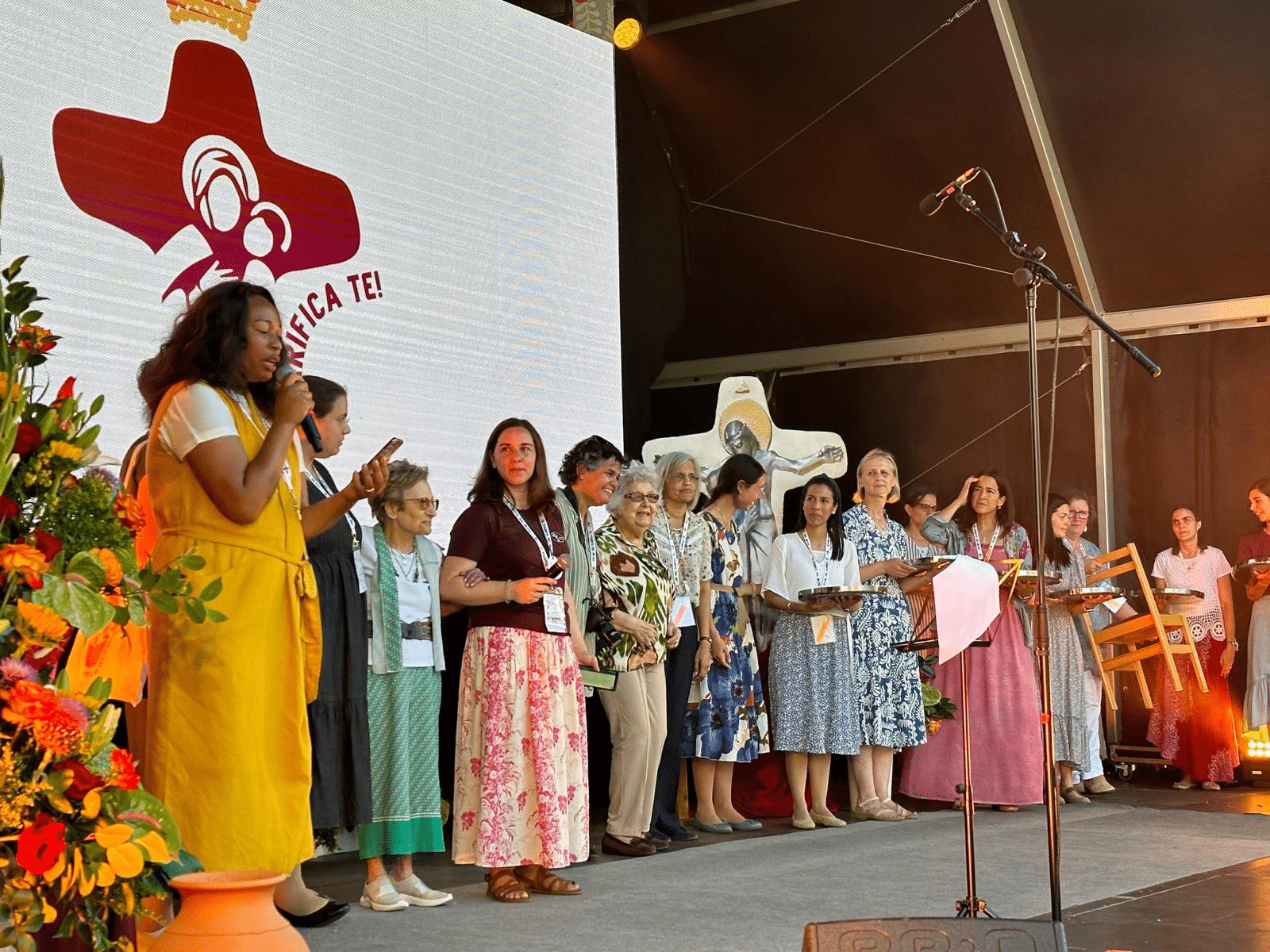
Facts and interesting details about the life of Blessed Karl Leisner
On August 12, the date of his death, the Church celebrates the memory of Blessed Father Karl Leisner, a member of the Schoenstatt Movement. He lived a life full of audacity and beautiful testimony, characterized by love for Christ in union with Mary. Leisner was beatified by St. John Paul II in 1996. He became a historic figure by facing the challenges of a concentration camp with faith and a smile on his face.
Interesting facts about Karl Leisner's life
Here are some facts and interesting details about the life of this priest:
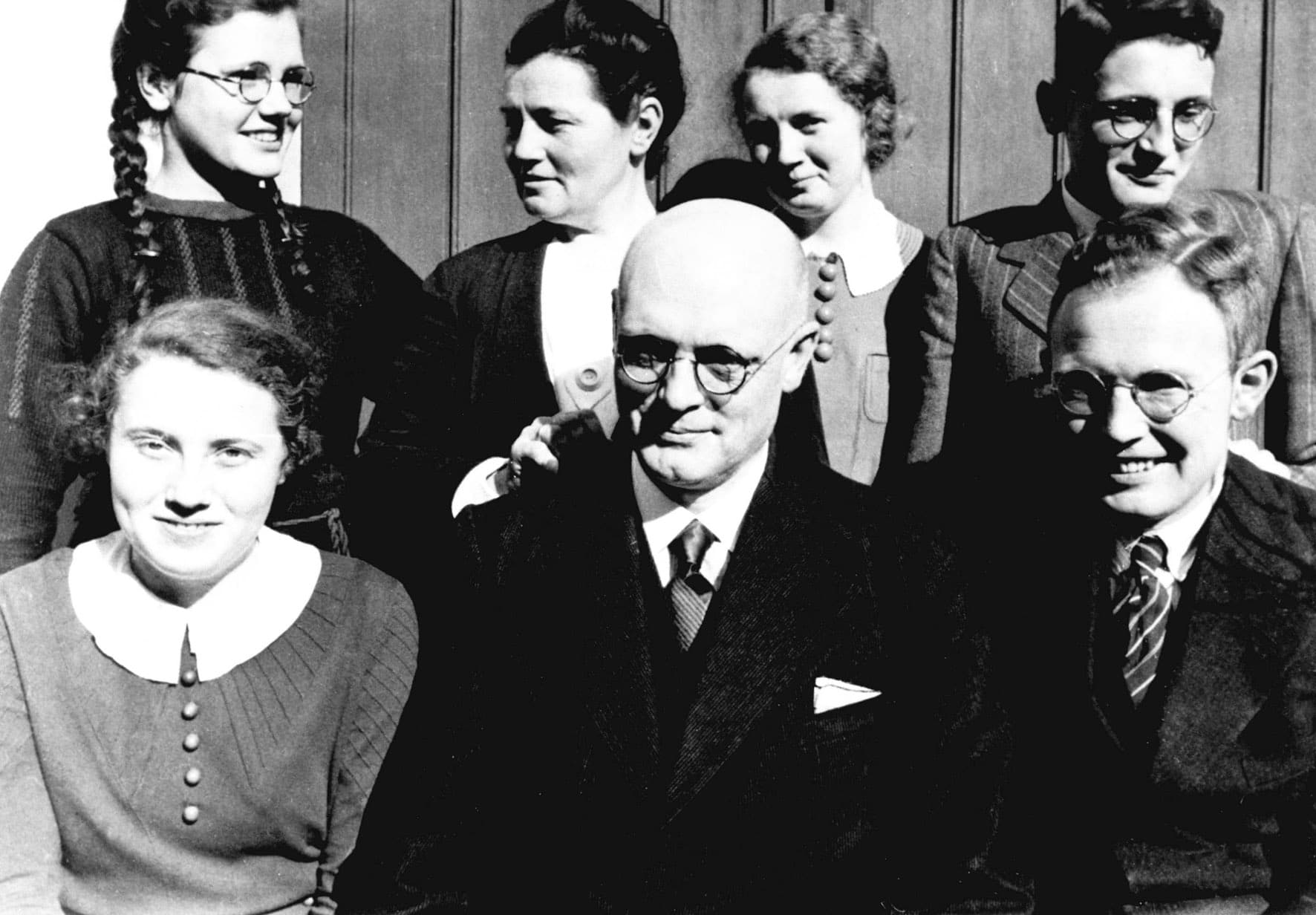
- Leisner was the oldest of five siblings and was an altar boy as a child.
- At the age of 16, he was elected as leader of the Catholic Youth in his district. Among its activities, the group combined prayer and outdoor exercises (such as camping and cycling).
- Karl spent six months in compulsory agricultural service, created by the Nazi government. During this time, he organized Sunday Mass for his fellow workers, despite government opposition.
- He was ordained a deacon on Annunciation Day, March 25, 1939. Shortly thereafter he discovered he was suffering from tuberculosis and was admitted for treatment at a sanatorium in St Blasien in the Black Forest.
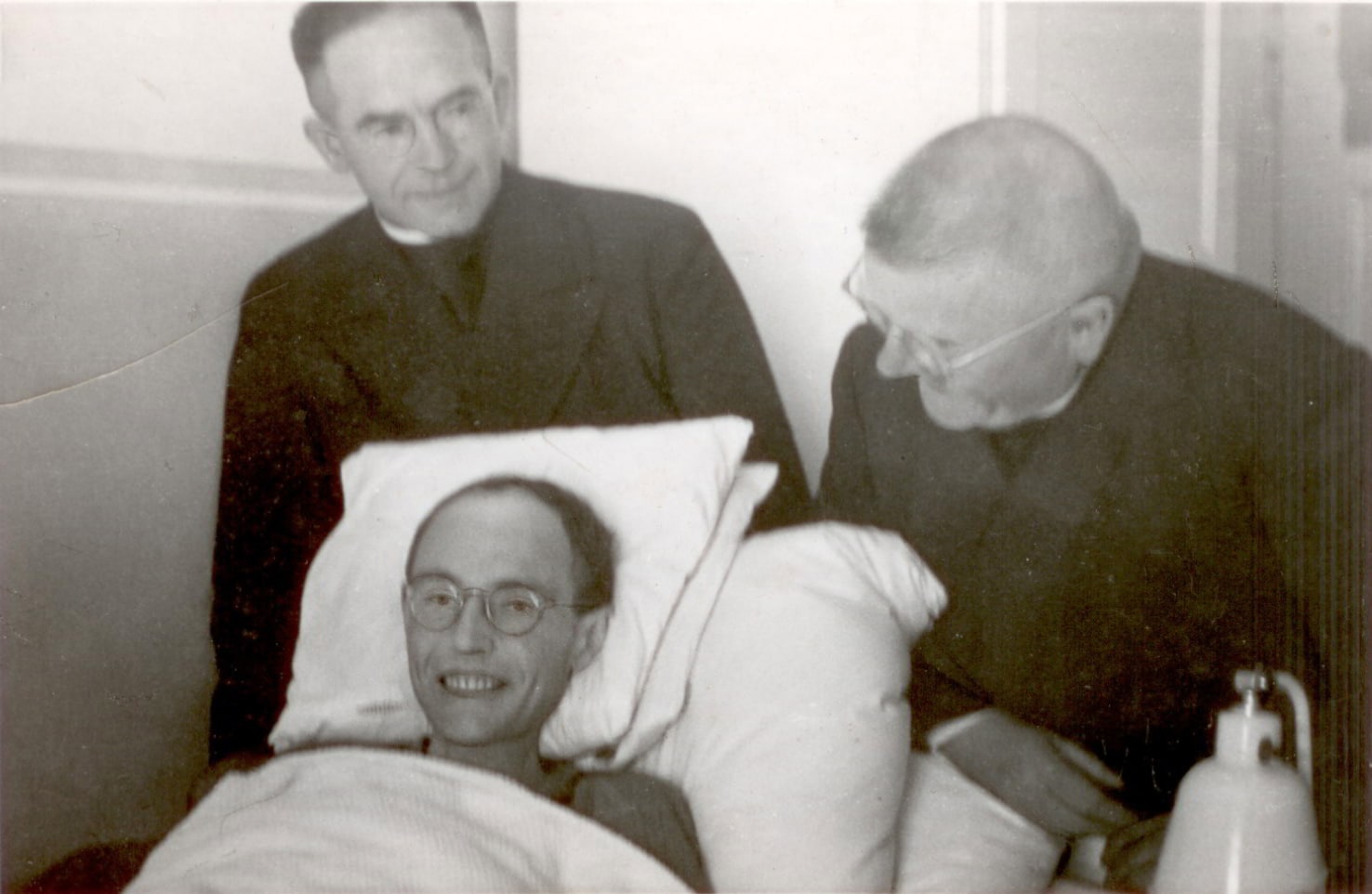
- He was detained for a single word. When a friend came to visit him at the sanatorium, he told him that the attempt on Hitler's life had failed. Leisner did not hold back and said: "Schade!" (What a shame!). That was the reason he was denounced and taken as a political prisoner.
- As a prisoner in the Dachau concentration camp, Karl Leisner founded, together with Father Josef Fischer, the first Schoenstatt group in Dachau. Later he was part of the circle of Schoenstatters around the founder, Father Joseph Kentenich, in the prison.
- Leisner is the only priest in history to be ordained in a concentration camp.
- In order to be ordained, he had to obtain authorization and documentation signed by the local bishop (of the Munich archdiocese). For this, he was assisted by "Mädi", a young woman named Josefa Mack, known as the "Angel of Dachau". She later became a consecrated woman, called Sister Maria Imma.
- 2,300 imprisoned priests attended his ordination ceremony on December 17, 1944.
- And not only Catholics participated in his ordination. Some imprisoned Protestant pastors helped organize the event and a Jewish violinist played music near the barracks to distract the guards' attention.
- Although the situation was deplorable, Karl was never discouraged. He used to sign his letters writing: "Immerfroh", which means: "always happy".
- TIP: You can take a virtual tour of the chapel where he is buried - click here
Some of the personal goals that Karl Leisner pursued
Below are some of the personal goals that Leisner wrote down in his diary for personal growth. They may serve as inspiration on the path to holiness in our present life:
- Inwardly: no unworthy, disorderly, or vulgar thoughts. Honesty.
- Outwardly: always with proper behavior and attitudes. Decorum and politeness
- Begin the day with “sursum” (praise) to God. Begin the day with enthusiasm and piety.
- Rise promptly and punctually.
- Reflect calmly, then act with audacity.
- Spread the Catholic faith through the most concrete acts.
- Do not let the devil act; keep a strict schedule.
- Never feel sorry for yourself
- His petitions for seminary life were: "disciplined thinking, disciplined outlook, disciplined tendencies" and the ability to deliver speeches "speaking freely, without a written script".
To inspire...
The life of every heroic figure - like Leisner's - is not only remembered as a memorial, but as a way to inspire new generations. His example lives on so that many may be moved to become, through the Covenant of Love, a new man, a new saint for their time. May Father Karl Leisner intercede for this intention!
Schoenstatt Youth is involved in the catechesis at WYD
One thing that has become a tradition at World Youth Day consists of the catechesis sessions. These are moments of encounter, reflection, and prayer for young people throughout the week. There are venues for this throughout various parishes and places in the city, divided by language.
For many years, the catecheses have been led by bishops, but in 2023 there is something new. At WYD Lisbon, the youth will be the protagonists! They will lead the catechesis. And the Schoenstatt Youth has not been left out.
The youth group from Brazil will be responsible for one of the catechesis spots during WYD. They will be accompanied by the Brazilian bishop Benedito Gonçalves dos Santos, from the diocese of Presidente Prudente, state of São Paulo. The bishop will be one of the "spectators" during the reflections and will preside the moments of prayer, such as the Mass and the blessings.
Rise Up Encounters - The New Catechesis
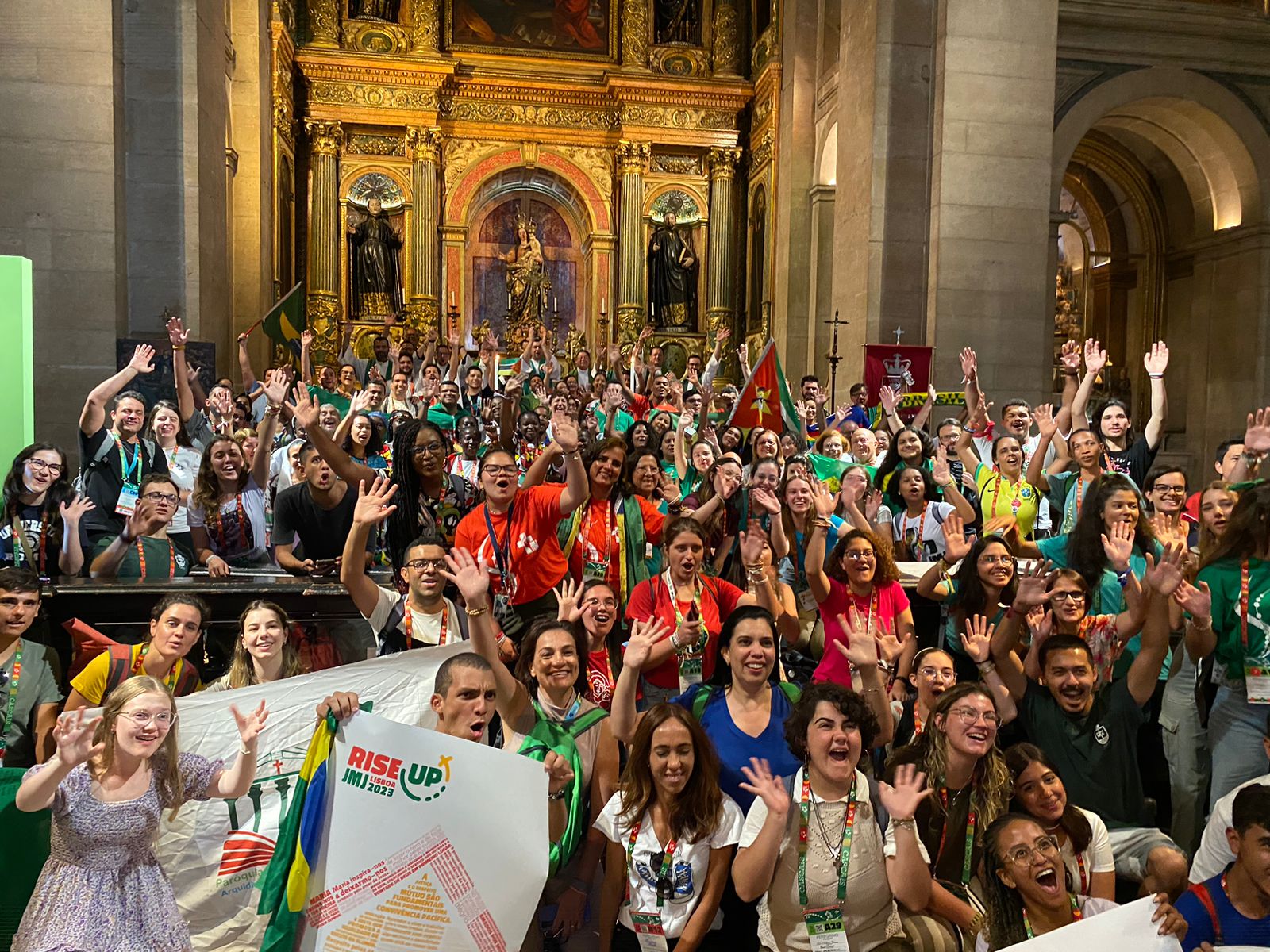
The catecheses will take place from August 2nd to 4th, from 9:30 am to 12:30 pm. This new model aims to challenge young people to reflect on the main topics launched during Pope Francis' pontificate. It also creates an experience in alignment with the Church's synodal journey. The three Rise Up encounters have been planned in close collaboration with the Dicastery for Laity, Family and Life. There are some 270 venues, organized by language - more than 30 languages!
The Schoenstatt group will be in the Church of St. Roque, in the center of Lisbon. Schoenstatt Father Rafael Mota, responsible for the group, says: "It is a very beautiful Jesuit church, with several relics of saints. 500 people are expected to participate in the catechesis in Portuguese. Outside the church, there will also be a catechesis in Spanish and 1,000 people are expected to attend. Including our coordination group, plus the participants, there should be about 1,700 people in the church".
There will be three days of discussion on specific topics. Father Rafael explains, "In these three days we will touch on fundamental topics for Pope Francis: integral ecology, social friendship and mercy."
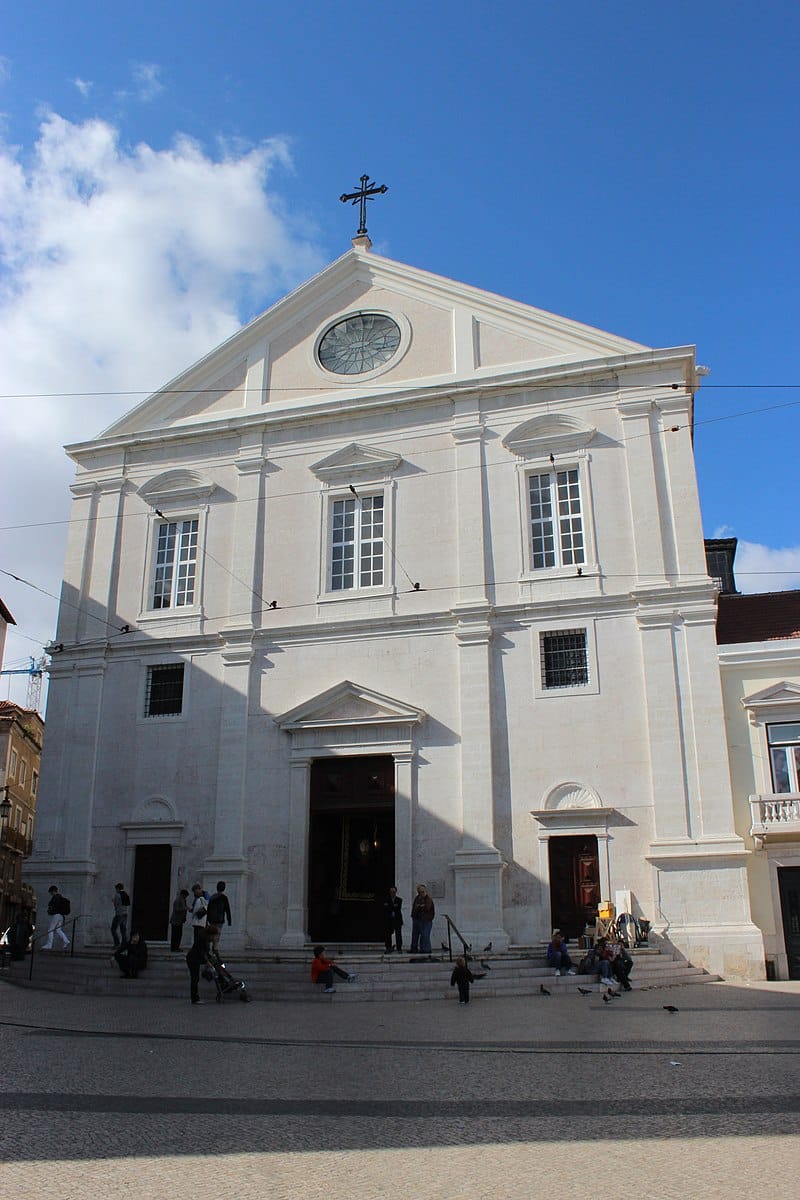
First day of catechesis: integral ecology
The encyclical Laudato Si is the document that will be considered for reflection on the first day. It begins with a Bible reading, then a study of excerpts from the document.
This is followed by a sort of television program in which the opinions of the young people will be heard. "Our role as moderators is to be facilitators and mediators of this debate, so that everyone can express themselves and comment on the issues that the Pope has spoken about on integral ecology. The idea is that all the opinions will be gathered at the end, during a panel discussion," said Father Rafael.
Second day of catechesis: social friendship
On the second day, the topic will be social friendship, based on the Encyclical Fratelli Tutti.
"It begins with prayer, then there is a reading from the Bible, a little bit about the encyclical and a dialogue among all those who are present. Everyone gives their opinion, in a synodal way, and the opinions will be gathered. Afterwards, the bishop will conclude and then the Mass will take place," explains Father Rafael.
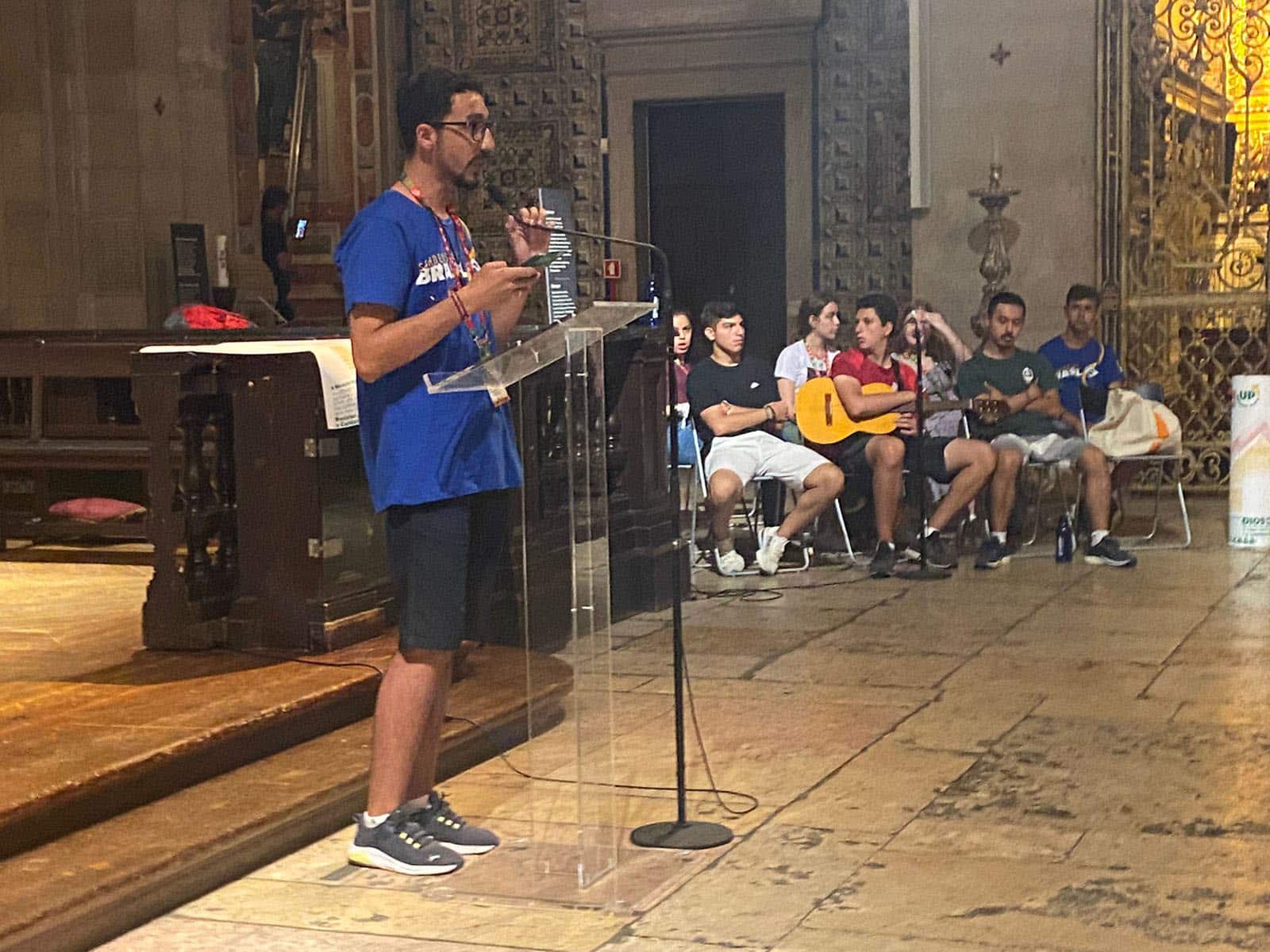
Third day of catechesis: mercy
Another topic that is very dear to the Pope's heart is mercy. It is precisely for this reason that the last day is dedicated to this topic. The program for this day is different: there is no plenary session or long lectures, but rather an opportunity to make an examination of conscience and go to confession.
During each of the days, a house will be drawn up on a board, on which the opinions of the young people will be written. "We will hand these opinions over to the parish team, who will then take it over to a larger team, in a spirit of synodality. The idea is to listen to the thoughts of the young people on the three topics," summarizes Father Rafael.
See more details of the Rise Up meetings here
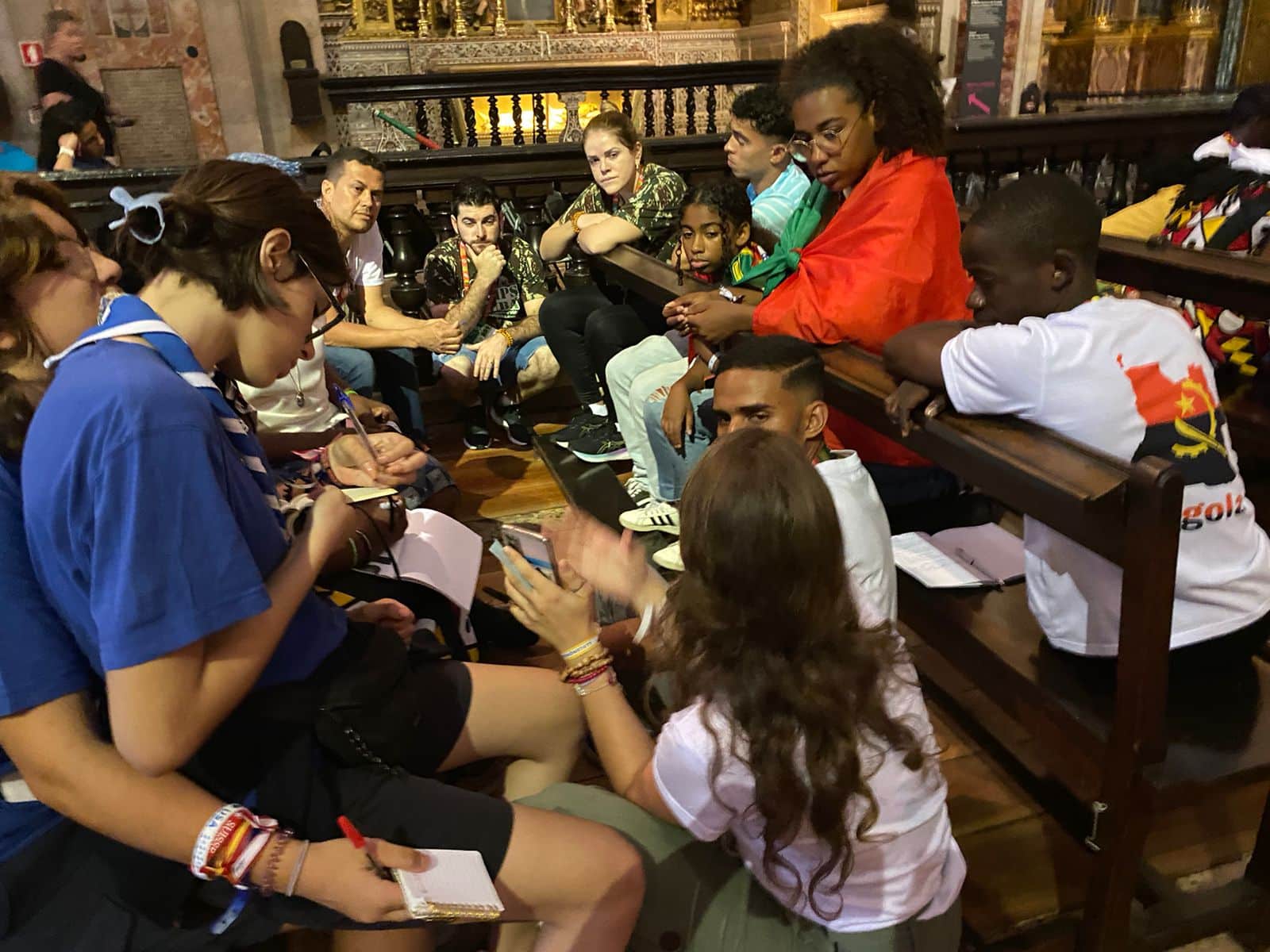
10 interesting facts about WYD and its history
Only those who have experienced a World Youth Day know the impact it can have. It is impossible to say how many lives are impacted, reaching new directions, as a result of this experience. Let us take a look at how WYD came about and other interesting details.
How did World Youth Day come about?
WYD was created by Pope John Paul II in 1984, during the Holy Year of Redemption (1983-1984). He wanted to celebrate the Holy Year in a special way with young people, so he organized a one-day gathering at the Vatican.
60,000 pilgrims were expected at the Vatican, but surprisingly 250,000 people turned up, coming from many countries. Because of this turnout, the Holy Father decided to repeat the experience the following year. In 1985, 300,000 young people came to Rome for the event. Due to the success of the event, John Paul II wrote an Apostolic Letter on December 20, 1985, announcing the establishment of WYD in the Church's calendar.
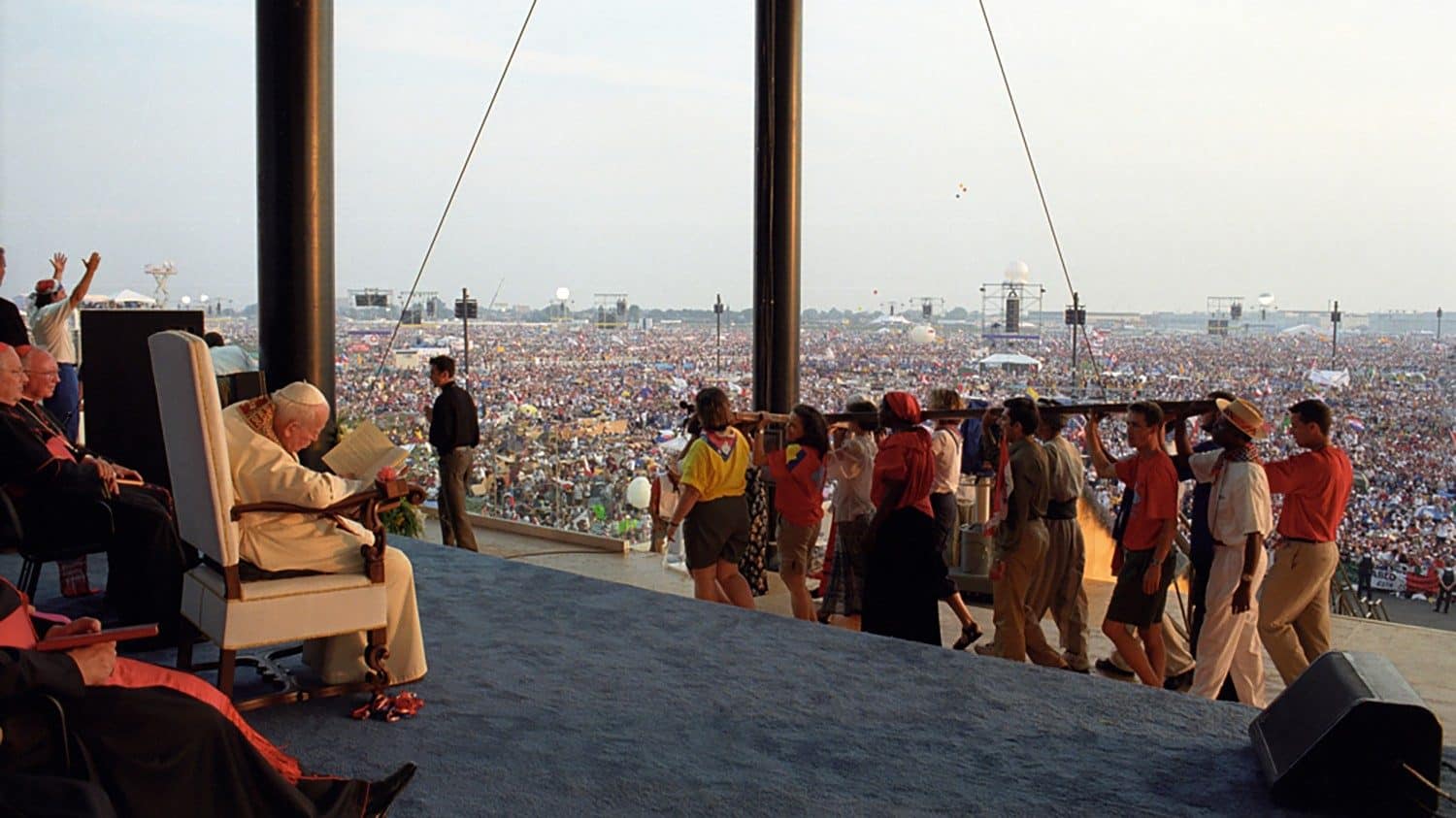
In some languages, such as English and German, the event still carries the word "day" in its name. This is because WYD was originally intended to be held on a single day. Today, however, the event takes place over the course of an entire week. This has led translations from other languages, such as Spanish and Portuguese, to adopt the word "journey".
How often is WYD celebrated?
WORLD Youth Day is held every 4 years, while countries and dioceses organize local annual events.
Where will the next WYD be held?
There are several articles circulating on the Internet suggesting which country will host the next WYD. However, the official announcement will be made by the Pope at the end of this year's event, and only then will it be possible to know the exact location.
https://www.youtube.com/watch?v=H7tBqLlV4Jw
Countries and mottos of all WYD events
The following is a list of the year, country, city and motto of each WYD:
1986 - ROME, ITALY
Motto: "Always be ready to give an answer to everyone who asks you to give the reason for your hope" (1Pet 3:15).
1987 - BUENOS AIRES, ARGENTINA
Motto: "We have come to know and believe in God's love for us" (1 Jn 4:16).
1989 - SANTIAGO DE COMPOSTELA, SPAIN
Motto: "I am the Way, the Truth and the Life" (Jn 14:6)
1991 - CZENSTOCHOWA, POLAND
Motto: "You have received the spirit of sonship" (Rom 8:15).
1993 - DENVER, UNITED STATES
Motto: "I have come that you may have life and have it abundantly" (Jn 10:10).
1995 - MANILA, PHILIPPINES
Motto: "As the Father has sent me, so I also send you" (Jn 20:21).
1997 - PARIS, FRANCE
Motto: "Teacher, where do you live? Come and see" (Jn 1:38-39).
2000 - ROME, ITALY
Motto: "The Word became flesh and dwelt among us" (Jn 1:14).
2002 - TORONTO, CANADA
Motto: "You are the salt of the earth, you are the light of the world" (Mt 5:13.14).
2005 - COLOGNE, GERMANY
Motto: "We have come to worship Him" (Mt 2:2)
2008 - SYDNEY, AUSTRALIA
Motto: "You will receive power when the Holy Spirit has come upon you, and you will be my witnesses" (Acts 1:8).
2011 - MADRID, SPAIN
Motto: "Rooted and built up in Christ, firm in the faith" (Col 2:7).
2013 - RIO DE JANEIRO, BRAZIL
Motto: "Go and make disciples of all nations" (Mt 28:19).
2016 - CRACOW, POLAND
Motto: "Blessed are the merciful, for they shall find mercy" (Mt 5:7).
2019 - PANAMA CITY, PANAMA
Motto: "Behold, I am the handmaid of the Lord; let it be done to me according to your word" (Lk 1:38)
2023 - LISBON, PORTUGAL
Motto: "Mary arose and departed in haste" (Lk 1:39). (Lk 1:39)
10 interesting facts about the various World Youth Days
1) In Spain, in 1989, Pope John Paul II walked the last part of the Way of St. James, up to the Cathedral, which is the final destination of the route. He walked using a walking stick, as many pilgrims do.
2) The first Way of the Cross of WYD took place in the streets of Denver, United States. Since then, this activity has been part of the official program of the event.
3) The largest edition of WYD in terms of pilgrims took place in 1995. Four million people participated in Manila, Philippines. For many years, this meeting held the record for the largest papal event in history. However, the record was broken in 2015, with a Mass celebrated by Pope Francis at the same location, which was attended by close to six million people.
4) At the Manila meeting, a terrorist group intended to attack Pope John Paul II. The idea was to blow up the popemobile, using a suicide bomber disguised as a priest. They also planned to bomb several airplanes. However, the plan was discovered four days earlier, when the group's residence was accidentally set on fire.
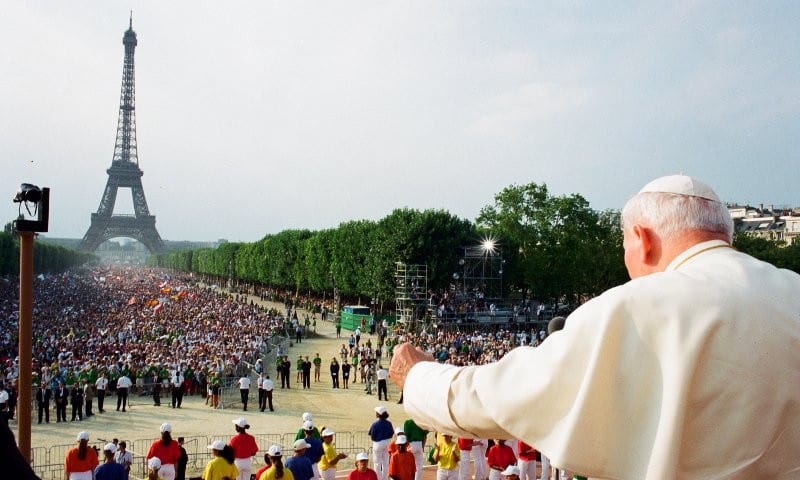
5) WYD in Paris in 1997 was marked by several innovations: the introduction of the Days in the Dioceses (an encounter that precedes the week of WYD) and the Youth Festival (a cultural and artistic program that aims to highlight the talents of young people in areas such as music or acting).
6) The hymn "Emmanuel", one of the most popular in history, was featured in the 2000 edition. That was also the year Pope John Paul II introduced the icon of Our Lady Salus Populi Romani, which became one of the official symbols.
7) By chance, Pope Benedict XVI attended the first WYD as pontiff in his native Germany. When he was elected in the conclave, the event was already scheduled. The 2005 Cologne edition was also marked by the first youth vigil, with Eucharistic adoration, which today is the highlight of the event.
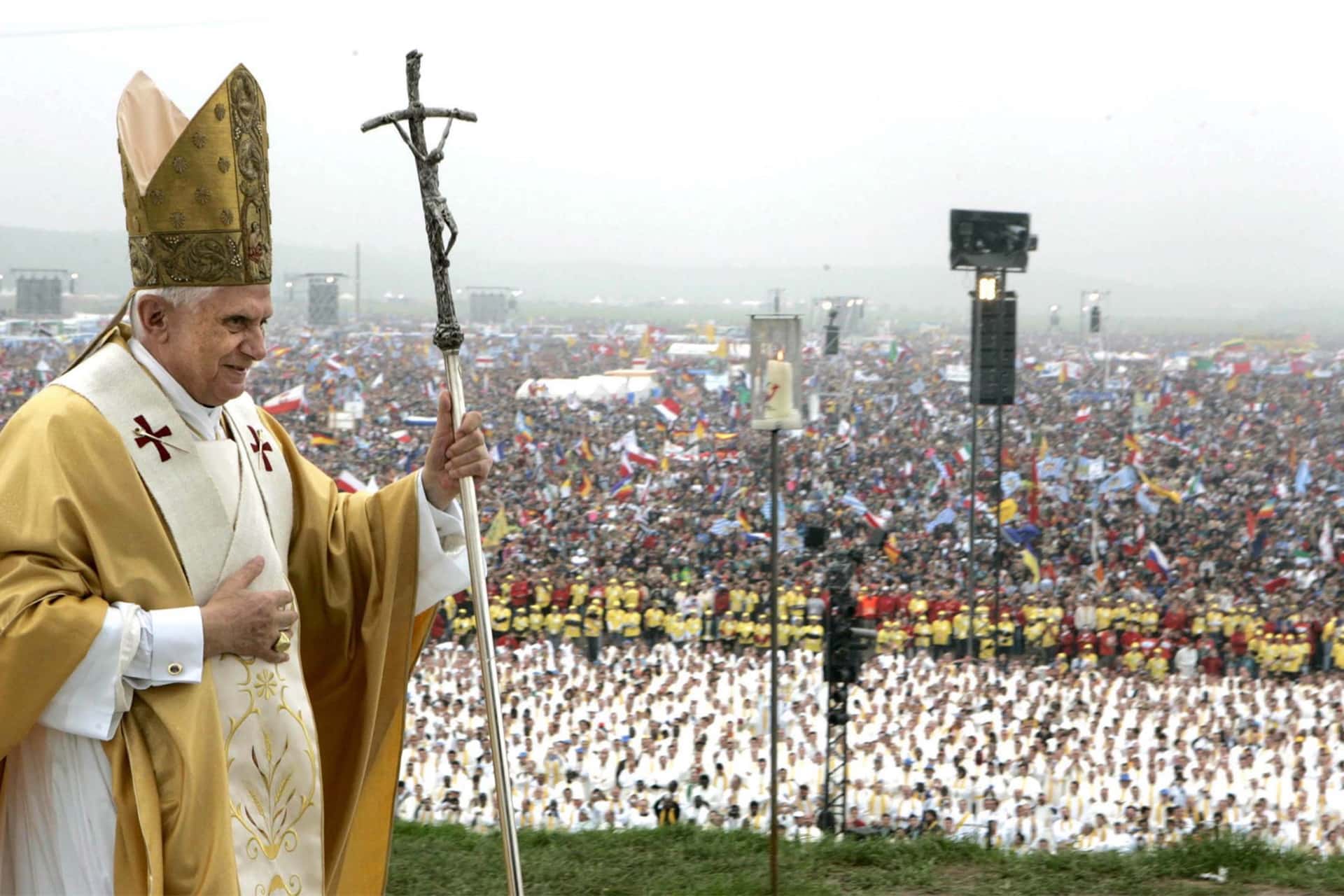
8) The first Youth Day held in Oceania took place in Sydney (Australia). There, Pope Benedict XVI chrismated 24 youth. It was also in this edition that WYD began to be featured on social networks.
9) The largest monstrance in the world was used for Eucharistic adoration at WYD in Madrid in 2011. It measures three meters high (almost 10 ft.), weighs 180 kilos (almost 400 lbs.) and was made in 1520 by Enrique de Arfe.
10) WYD Panama had a Marian motto for the first time. Pope Francis spoke of Mary as "the greatest influencer in history".
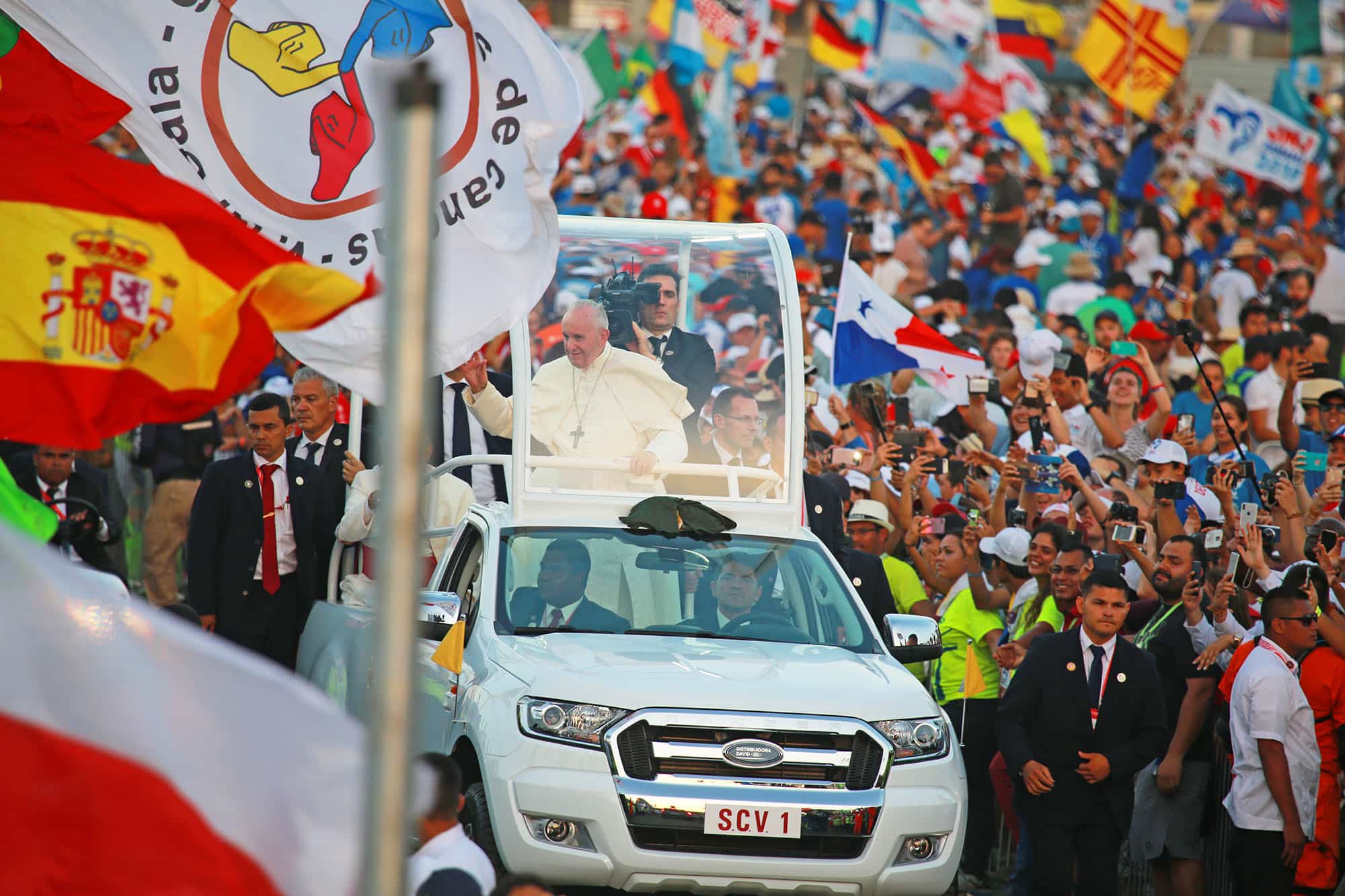
Youth: "Here we are because we had the courage to dream"
"We come from different nationalities, but we are united by something in common: love for Christ, for the Church, for Schoenstatt. We had the courage to dream, that is why we are gathered here today". These are the words that opened the International Youth Mass celebrated in Schoenstatt. It took place in the Pilgrims' Church on the afternoon of July 25th. Delegations with youth from eight countries, who are on their way to WYD in Lisbon, participated in the Mass.
The groups in attendance came from: Argentina, Brazil, Chile, Ecuador, United States, Mexico, Paraguay, and Puerto Rico. Members of the international youth, their advisors and several members of the local Schoenstatt Family were present as well.
The Mass was presided by the Rector of the Original Shrine, Father Ignacio Camacho. Concelebrating with him were priests from Nigeria, India, Germany, Chile, Portugal, Ecuador, Uganda, Brazil, USA, and other countries

Youth and pilgrims on the way
The liturgy recalled the figure of St. James the Apostle. He, like the young people of WYD, was "also a pilgrim," said Father Ignacio. James was one of the disciples closest to Jesus, who was present at important moments, such as on Mount Tabor and in the Mount of Olives. "When I think of him, the idea of the road quickly comes to mind - we have all heard of the way of St. James. The image of the pilgrim is directly associated with him".
Father Ignacio Camacho stresses that the invitation to be a pilgrim comes from Christ, who takes the initiative. "Something we can describe from the public life of Jesus is that he also traveled extensively. So many images in the Gospel show us Jesus on the way. And he teaches his disciples to walk like he did."

Dare to ask: What is my path?
Taking the Gospel in the light of Schoenstatt's history, he adds: "The image of the road also speaks to us about our own personal life and our Covenant life. The Covenant of Love is a real road that we travel, a road that our Father also traveled. The way of St. James was not simple or easy, he did not understand everything at the beginning [in Schoenstatt], not everything was clear, but God gradually unveiled it".
Fr. Ignacio motivates the youth to maintain their originality, reclaiming their personal history. "The way of Jesus is an original path. No two are alike. Jesus calls us with our own history, with our families, with our abilities and also with our weaknesses. He is the treasure that we carry in clay pots".
The Rector emphasizes that the road of life with Christ must be traveled as a community and with simplicity. And he launches a challenge: "Dare to ask Jesus: what do you want from me, what is my life path, where do you want me to go, how do you want me to follow you? Dare to dream. Don't have small dreams, but rather profound ones. Dare to step out of your comfort zone, to do like our Mother and go out in haste."
Different cultures, the same ardor

A special moment of the celebration was the renewal of the Covenant of Love in the Original Shrine. There, the youth lived an experience in which they once again gave their hearts to the MTA.
"We were able to experience the bond between all the nationalities that were present here and also prepare our hearts, in this longing to go to WYD and to stand up and take Mary everywhere," said Jéssica Fernanda Prado, from Brazil.
"It was very beautiful, and I was able to realize that the Schoenstatt Youth extends across several borders and we all have the same enthusiasm. We have an inner fire that we want to share, to be together, to go toward God, to give everything for the Covenant," said Santiago Perón, from Argentina.
Rosario Galilea, from Chile, says: "The Covenant renewal was very beautiful, and I really liked the enthusiasm we felt and everyone's collaboration. We are very happy to meet people from different countries and cultures. We discovered that there are many others who are passionate about the mission".
Young Jacinta Loomis, Christina Rivera and Allyson Kahler, from the United States, share that "it is beautiful to see many different countries and cultures coming together in one Mass, celebrated in different languages. A place where we believe and celebrate the same thing. We are preparing for some amazing few days. After Mass we went to the Shrine, which is beautiful because we were all there for the same reason: to renew the Covenant that we have sealed in different parts of the world. And then we had a celebration in which each country presented something different from their culture. And it was very lovely to see how each country celebrated Schoenstatt in a slightly different way, but that we all managed to communicate and dance together. It was amazing."

Ignis Boy's Youth: "I came to bring fire"
Expectation, anxiety, and a lot of work are part of the routine of the members of the Schoenstatt Boys' Youth from Portugal. They are fully engaged in the preparations for Ignis, which is the International Encounter of the Boys' Youth. The event will take place in Aveiro/Portugal, from July 27-30, prior to WYD. In total, 532 participants from 18 countries are expected.
"We are full steam ahead, with lots of meetings, logistical work, rehearsals, trips, calls, etc. But we are happy to have a great team of young people and advisors who are giving their very best to make IGNIS a remarkable experience of encounter with God and among young people," commented seminarian Lucas Botassio, from the Institute of the Schoenstatt Fathers.
Bringing the fire of our charism to WYD

The motto chosen by the team of WYD leaders from Portugal and Spain for this encounter is a phrase spoken by Jesus (Lk 12:49): "I came to bring fire".
"It expresses the spirit that we want to live during these days of preparation for WYD. On the one hand, we want to let ourselves be set on fire by the vitality and enthusiasm that each group of the international Boys' Youth brings from their country of origin. It is a great treasure and an opportunity to share dreams, to build new bonds and to feel the fire of being together again, especially after the pandemic. On the other hand, it expresses the desire to bring the fire of our charism to WYD. We want to share our way of living our faith, our Covenant culture with all those we meet. Thus, we are also sent to spread the fire!", Lucas explains.
As a symbol, they will go on pilgrimage from Aveiro to Fatima, on July 30th. They will carry the same torch that the Boys' Youth carried, in 2014, from Rome to Schoenstatt (Fackelauff). "This gesture expresses our dream of bringing, through Our Lady, the fire of Christ to all the people participating in WYD," says Lucas Botassio.
The young participants are the protagonists
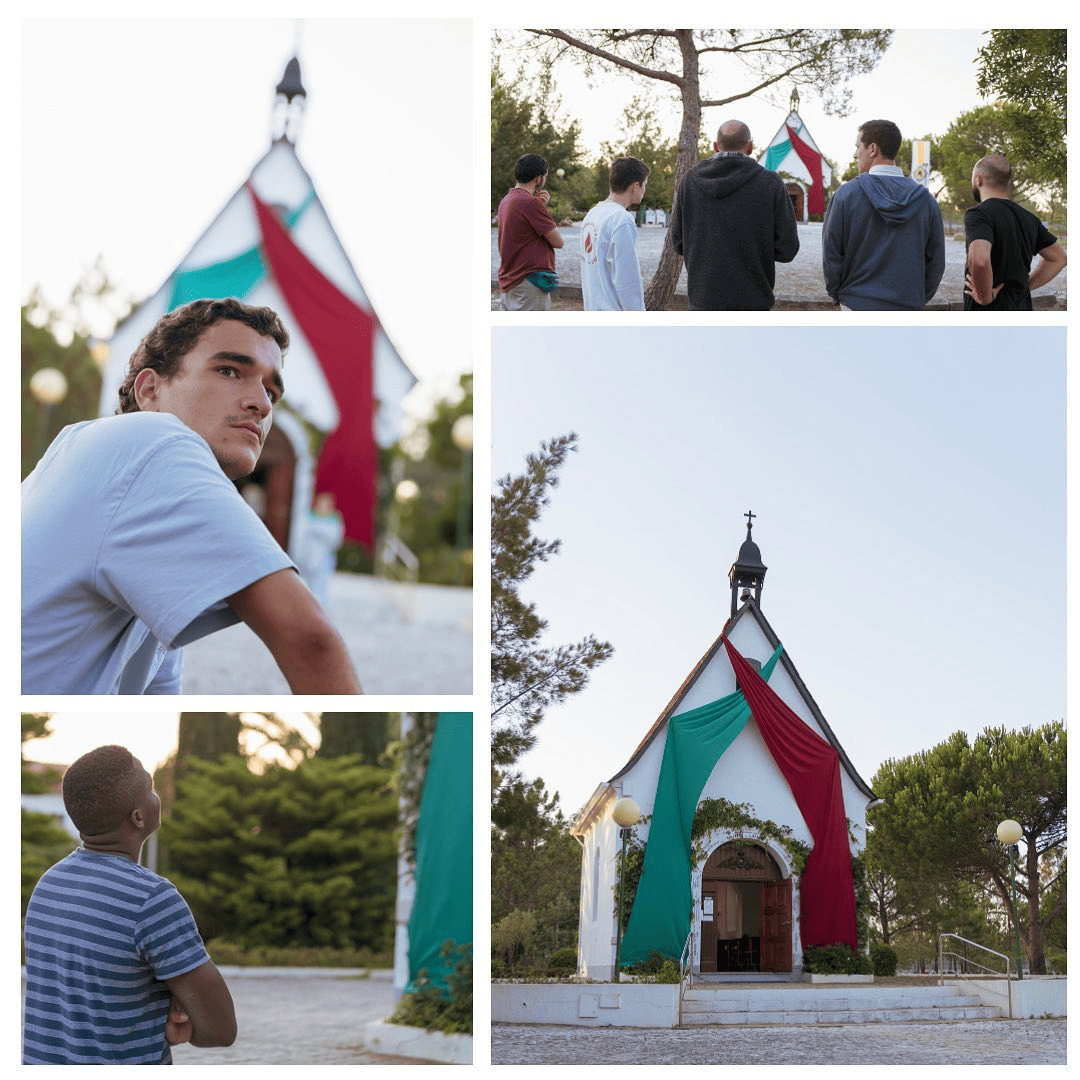
Participating in Ignis (a word that means "fire") will be representatives from: Argentina, Austria, Bolivia, Brazil, Chile, Costa Rica, Czech Republic, Ecuador, Germany, Italy, Mexico, Paraguay, Poland, Portugal, Spain, Switzerland, Hungary, and the United States.
"Young people are the protagonists, that's why we want them to have a privileged space to express themselves and share their dreams and experiences. The IGNIS leaders strove to make the encounter as experience-driven and dynamic as possible. Therefore, we have reduced the 'massive' moments and focused on activities with smaller international groups. The greatest gift of the encounter is the opportunity to be together and to get to know Schoenstatt and the Boys' Youth from many places through the groups that will be made up during the encounter," the seminarian explained.
Today, across the ocean
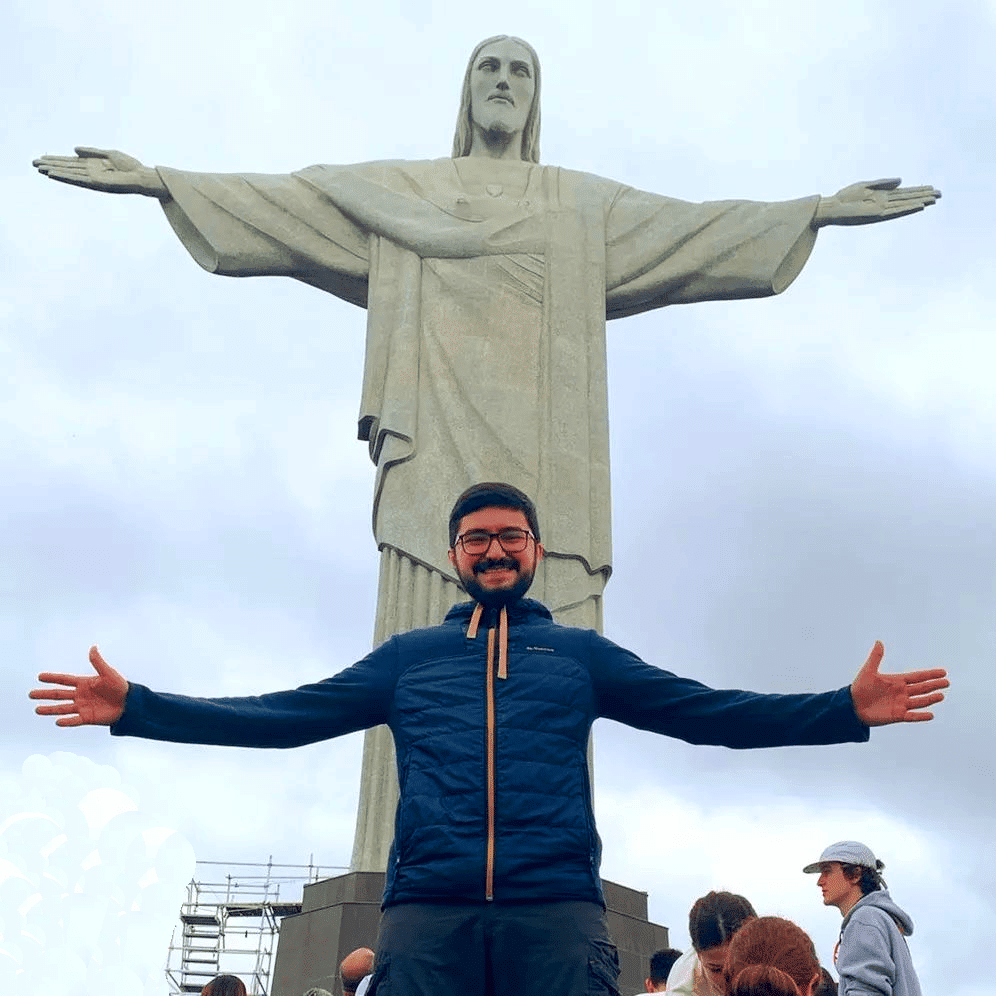
The first edition of Ignis took place in Brazil, just before WYD in Rio de Janeiro, in 2013. Lucas Botássio participated in this event and, based on this experience, talks about his expectations for the next International Encounter of WYD:
Ten years ago, I participated in the first IGNIS in Rio de Janeiro. It was an experience that deeply influenced me, even in the vocational sense. I remember being at Copacabana beach and looking at all those people, colors and flags that expressed the values to which I wanted to give life. Looking at the sea on the horizon, while contemplating the sunset, I felt an immense peace and a desire to go beyond. I think it was there that Jesus began to call me to go into deeper waters, even though at the time I did not know how to express in words that he was calling me to the priesthood. Today I find myself across the sea, geographically speaking. It is a privilege to be in Portugal and to have the opportunity to work so that many can experience the testimonies of other young people and of Christ, who continues to call young people to a full life, be it in marriage, or in consecrated or religious life.
The Symbol of the Ignis
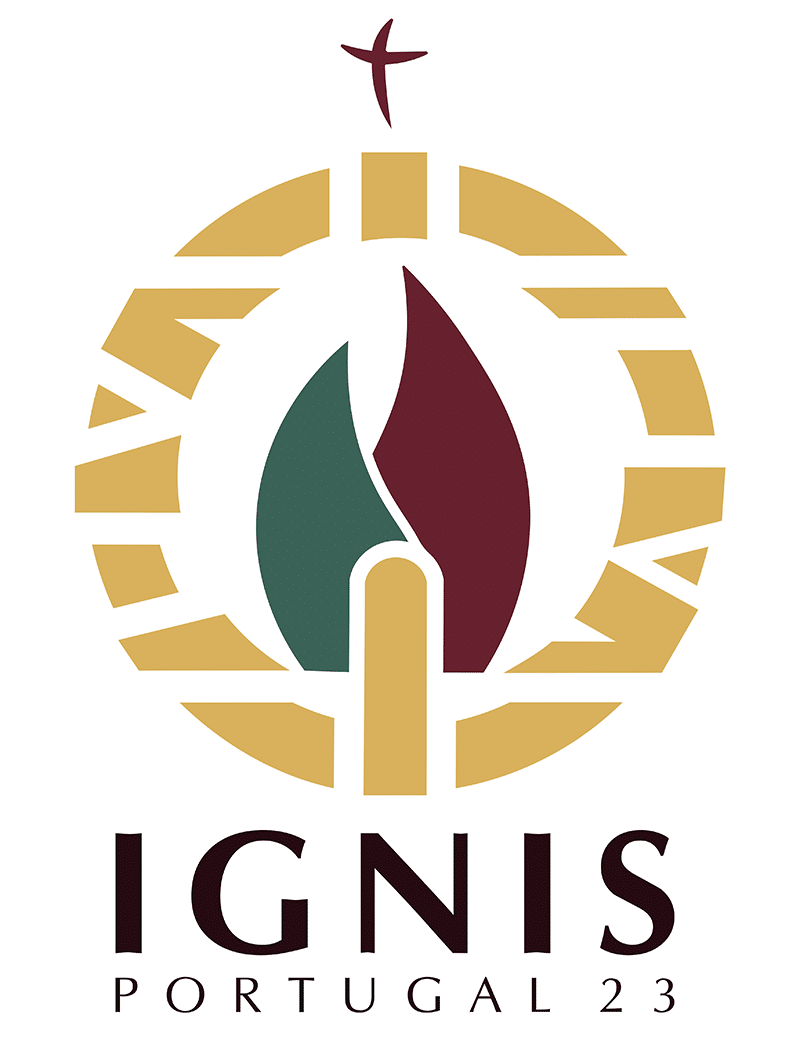
The 𝐚𝐫𝐦𝐢𝐥𝐥𝐚𝐫𝐲 𝐬𝐩𝐡𝐞𝐫𝐞 has been a national symbol of Portugal since the late 15th century, when King D. Manuel incorporated it into his royal emblem. Invented in China first and then improved by Greek and Persian astronomers, it was an astronomical instrument that allowed Portuguese sailors to understand the starry sky to guide themselves across the Oceans. It is a symbol that unites Portugal with the rest of the world!
The 𝐜𝐫𝐨𝐬𝐬 of unity is our star! A cross that represents the union so profound between Jesus and Mary and reminds us of the centrality of attachments in Schoenstatt spirituality, it is made in iron on the stone of the memorial behind the Lisbon Shrine. It is the symbol of the heroism to which we want to aspire for our lives. As the star that guides us in the surrender of love to the limit!
The 𝐬𝐚𝐢𝐥𝐬 of the Portuguese ships, such as the caravels, which were designed in Lisbon and Coimbra between the 15th and 16th centuries, made it possible to cross the ocean with the wind against and carried embalmed the Cross of Christ. They were especially important for crossing the Cape of Storms (Cape Town, South Africa), where the usually stormy winds would sink the boats and destroy the crews. This achievement was accomplished by Bartolomeu Dias in a Caravel and therefore later fostered the production of this type of boat with triangular sails. It reminds us of Mary, our flag, in her missionary impetuosity to take Jesus regardless of the strength of the adverse winds!
The 𝐝𝐨𝐨𝐫 of the shrine, a symbol that in Portugal became the ideal of the JM and later of the entire Family. We want to be the Door of Europe! Just as the Christian expansion left Europe, through Portuguese ports, to meet the new world. So we also believe that the re-Christianization of Europe goes through Portugal and the welcoming of the Portuguese people. We want to be a door of exit and entrance of God's graces! It is the symbol in Portugal of the counter-current of the 31st of May and of the Schoenstatt mission to the world!

